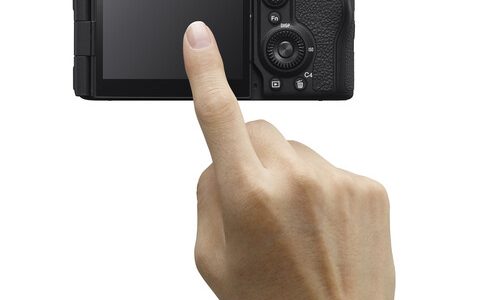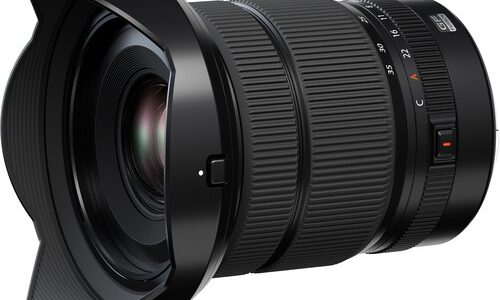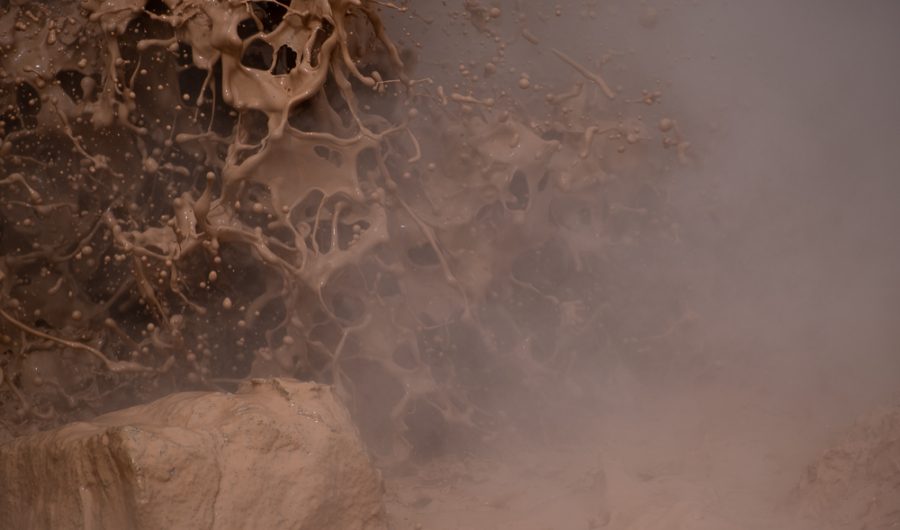


You’ve never seen files like this before, unless you’ve used either the original GFX 100 or very expensive medium format modular systems from Phase One or Hasselblad. In the previous part of this series, the GFX 100S (which EASILY merits a Highly Recommended rating) impressed me tremendously with the quality of its files viewed at 100% on screen. The central question of this part is whether that difference is visible in prints, and, if so, how big you have to print in order to see it.
More details further on in the article, but the simple answer is that, to my eyes and those of several non-photographer observers, the difference is visible even in 8×10” prints compared to the best of APS-C files (Fujifilm’s own X-T4 – also a Highly Recommended camera, although for a different job), and by 12×18” prints even against the best of full-frame digital, the Sony A7r IV. What I set out to see was whether that extra acuity from the extremely high-resolution sensor would deliver on the print – and it does. I wondered how to show the differences in relatively low-resolution web images, and settled on highly magnified scans of the same area of an image in 16×20” prints.
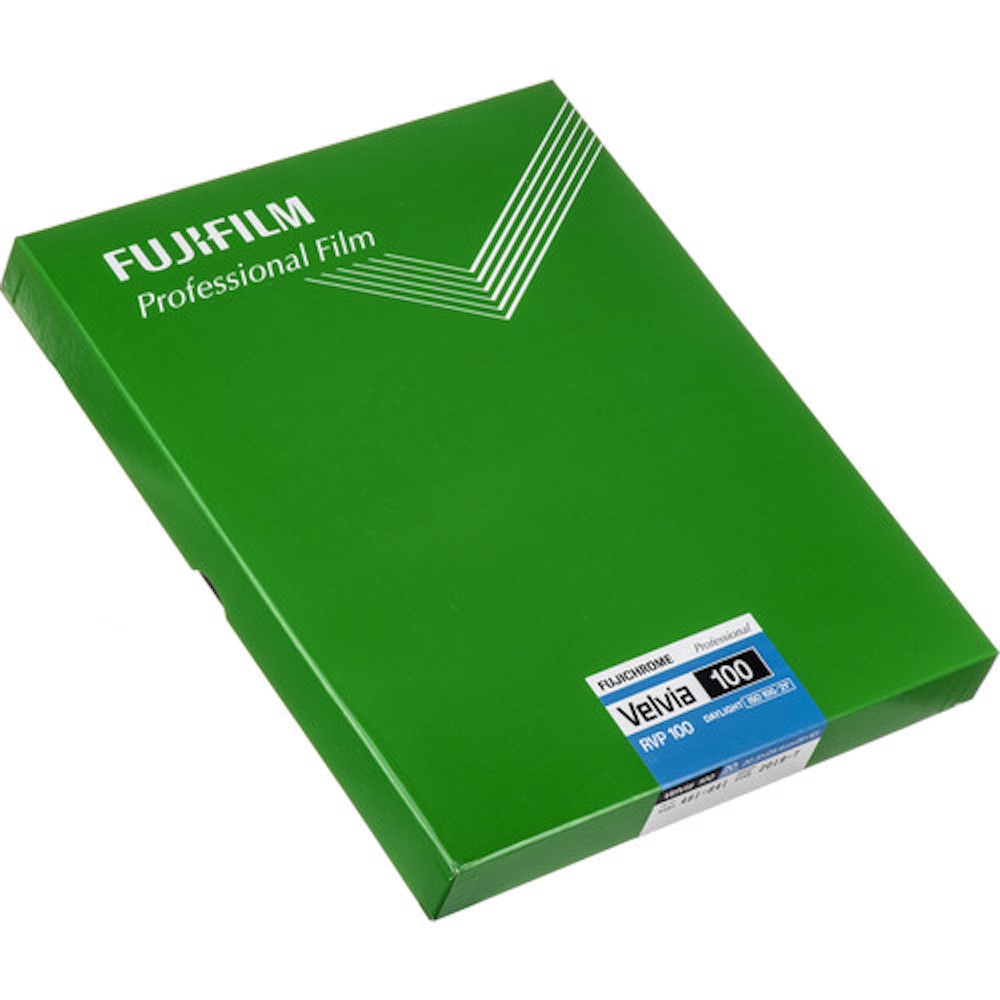
When I went into these tests, my bias was that the GFX 100S was almost certainly going to show more detail than anything else I had seen (how could it not, with that huge, modern sensor), BUT that the monster detail would only show up on monster prints. 24×36” prints from high-resolution full-frame are good enough that I was skeptical of whether there would be any improvement from more resolution. The best full-frame bodies are already showing print detail comparable to medium-speed 4×5” color film – what’s left? Large format Tech Pan? 8×10” transparencies? Image quality in the “well beyond most 4×5” films, in most circumstances” range has existed for quite a while, but it’s rare. Phase One backs have done that, as have some bulky and difficult to use devices (scanning backs and stitching rigs).
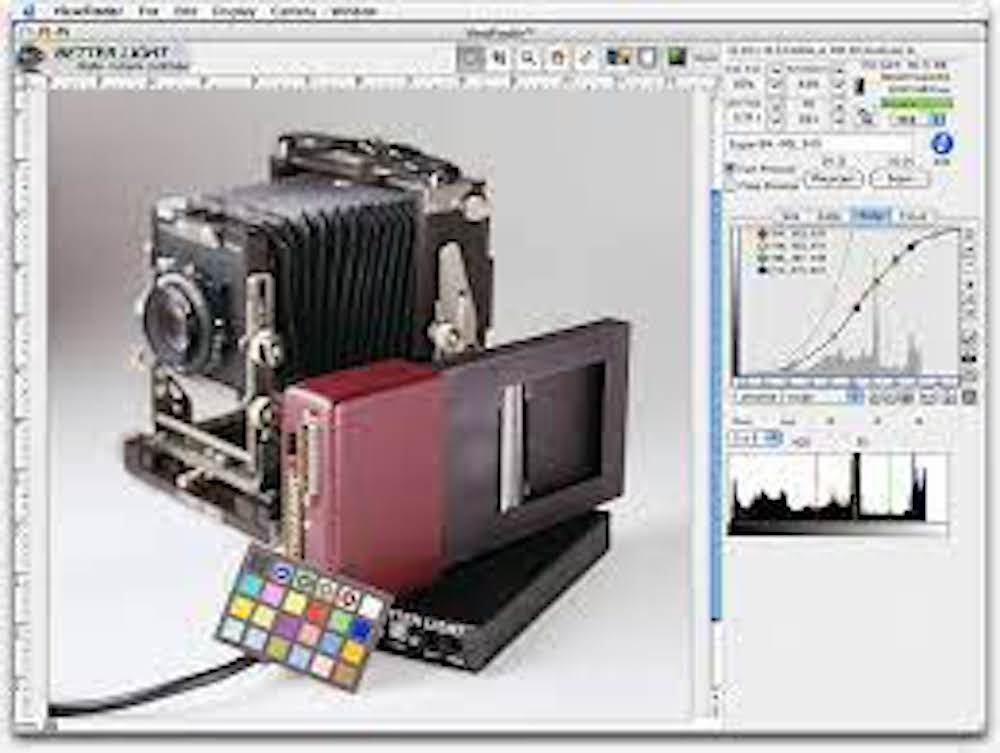
The rarefied world of ultra-high end digital, with image quality well into the large-format film class has actually existed for a couple of decades – BetterLight has made scanning backs with resolutions similar to the GFX since the early 2000s, although scanning technology is limited to images with absolutely no motion over several minutes – mostly art reproduction and certain architectural applications (many landscapes contain trees, other plants or water – all of which generally move too much for a scanning back). Phase One and Hasselblad have made single-shot 100 mp backs for medium format SLRs since the mid 2010s, which are useful in a wider range of applications, but jaw-droppingly expensive ($30,000 or more) and more fragile than a single-piece camera.
Since all of those options are so specialized that I had never seen one up close, nor talked to anyone who had extensive experience with one, the only 100 MP files I had seen before the GFX 100S were a few from the original GFX 100, which I had in for review a couple years ago. Having never gotten that camera out to the kind of places I love to photograph (too heavy for my use), I’d never really had 100 MP files worth printing in my hands. I believed that seeing the difference from really good full-frame would most likely require a 44” printer, which would, in turn still make the GFX 100S a very specialized camera, if an easier one to use than a scanning back. I was surprised to see quality differences, even from the best of full-frame, that I could pick out on modest-sized prints, differences that are meaningful enough that the advantages are real with the right subject, certainly in the 16×20” print size range and perhaps smaller than that.
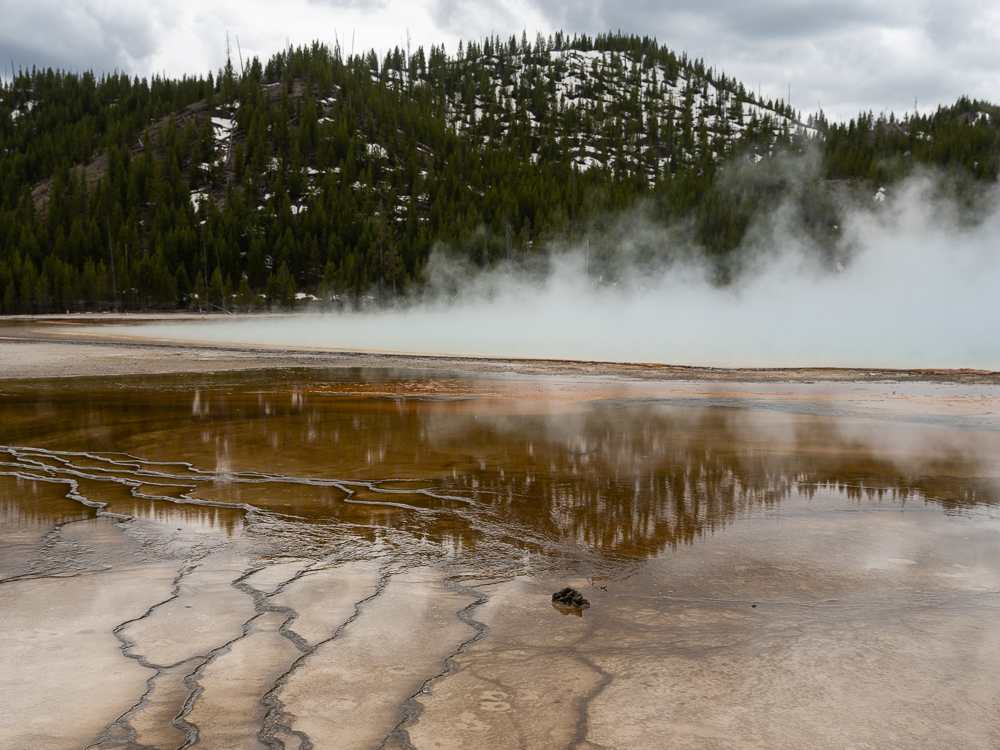
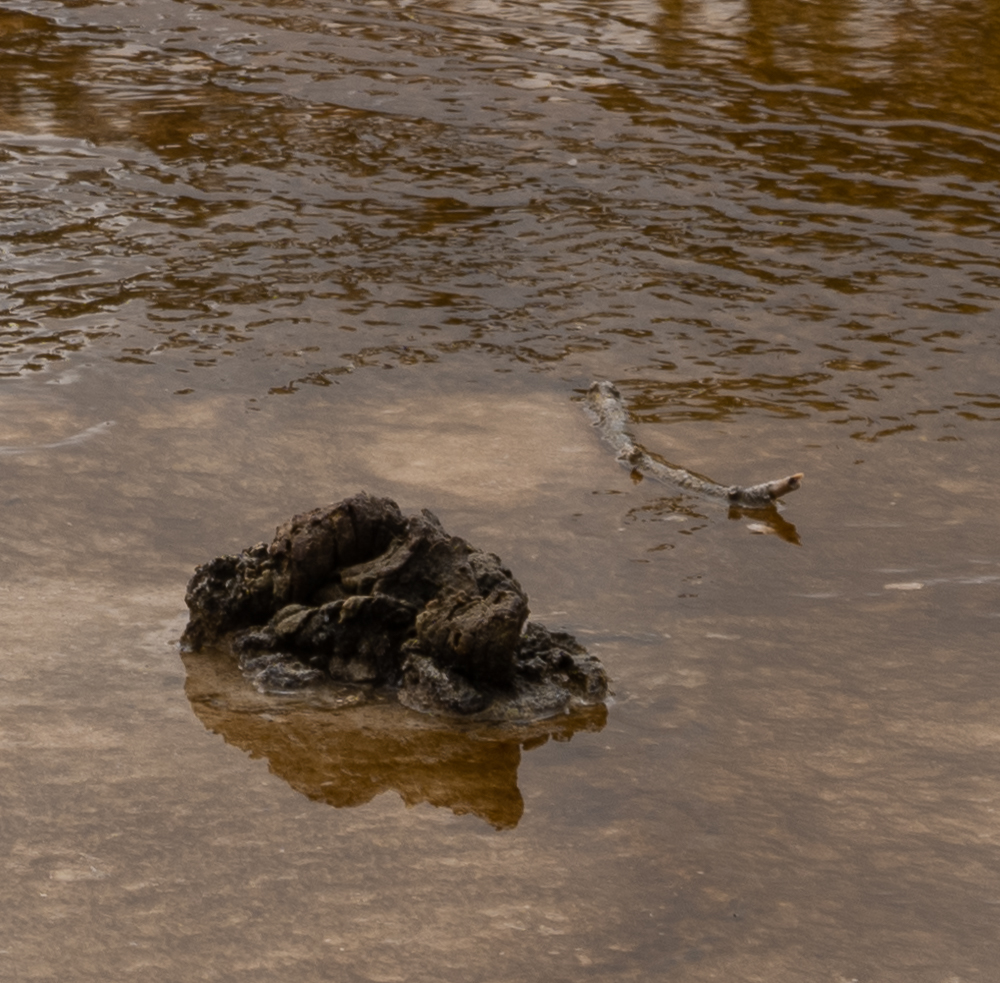
What the GFX 100S can do better than any other digital camera I have worked with is capture the kind of micro-detail that halfway registers between the eye and the brain. If you look at a print of a detailed landscape from a 35mm negative, it may look fine, but it won’t really draw the eye in. Look at an Ansel Adams original (or an extremely high quality reproduction) of a similar scene, and layers upon layers of detail will draw you into the image. Adams chose the 8×10” view camera in part because it could capture the details that make that kind of image compelling. You may not be able to point to detail on the bark of a distant tree in the Adams image and say “that’s what’s compelling”, but it is a part of the overall package. Clearing Winter Storm wouldn’t be the same image from 35mm Tri-X, even if the composition was identical.
Looking at an 8×10” print from the 100S to the very high-resolution Epson ET-8550 (with a 720 dpi dither and a 1.5 picoliter minimum drop size, it is the sharpest printer around here), compared to one from a good APS-C camera like an X-T4, the GFX shows more of the finest details when you feed a 720 dpi source file to the printer. The APS-C image is around 500 dpi native, and is being enlarged to the 720 dpi the printer needs. In my workflow, this enlargement happens in ImagePrint (for the small Epson printer, in ImagePrint RED, which sends an optimized image to the driver).
If resizing doesn’t happen anywhere before the print driver, the driver enlarges or reduces as needed – badly – this is one of the reasons I run everything through ImagePrint for every printer. The GFX image is closer to 1000 dpi, and is actually throwing away data since there is no printer that I know of that can dither at 1000 dpi. We shouldn’t be able to see this – supposedly 300 dpi is about the limit of what our eyes can pick out in a photograph, and the X-T4 is already operating well above 300 dpi at 8×10” – but there it is, right at the edge of our vision, but making the print more compelling.
A good full-frame camera (the example I had for similar shots was a Sony A7r IV) can keep up with the GFX at 8×10”. No matter how I edited, I couldn’t quite match the color, and I preferred what both Fujifilm cameras gave me to what I was able to get from the Sony. I could not, however, point to a part of the print and say “there’s something extra the big sensor’s giving me.” Aesthetically, I could say that I prefer what I can do with the Fujifilm file in a particular scene, but I can’t say it’s technically clearly superior at that size.
Moving up in print size, I made 16×20” prints on the Canon Pro-2000, using
Lightroom Classic (DxO doesn’t do X-Trans, and there was an X-T4 in the contest) to edit the images and ImagePrint Black to drive the printer. I used the double-resolution 600 dpi mode in ImagePrint, since the Sony and GFX files would be over 300 dpi at print size. IP Black (reviewed in the Printing series) bypasses the printer driver entirely and gets amazing results out of the big printers – I switched over to it a year and a half ago, and I haven’t looked back. I fed the images to ImagePrint at camera native resolution, letting ImagePrint resize and sharpen.
At 16×20”, not only the X-T4 but also the A7r IV had fallen clearly behind the GFX. The X-T4 print looked much better than any print that size from 35mm film, and a lot like most good, modern ~24 Mp digital cameras with a really nice lens on them – exactly what you’d expect from a beautiful little camera that punches well above its APS-C weight. The 16-80mm f4 Fujinon is a great lens, and the pair are a lot of fun to shoot. While it got trampled on by elephants in this test, it’s worth remembering what it was up against. Independent of the other two cameras, the X-T4 produced a highly credible image at that size. It was producing prints as good as slow 6×7 cm film, from a wonderful little camera to shoot (it feels a lot like an old Nikon FM2, except with a much better grip on it). Unless you’re printing big, I can’t think of a better photographic travelling companion, nor a better camera for day to day images. The A7r IV was a clear step up – no surprise for the King of The Pixel Monsters. I had wondered how visible it would be at 16×20” (or would it take 24×36”, where the X-T4 is running around 180 dpi, to really see the difference). The A7r IV is around 400 dpi at this print size while the X-T4 is closer to 260 – close to the 300 dpi region where we aren’t supposed to perceive differences as easily. As mentioned above, the X-T4 print looked very good – until it was right next to an A7r IV print. There was clearly additional detail in the A7r IV print, and it was visible to several observers. Yup, there’s a reason to use high-resolution full-frame at 16×20”…
The real surprise was the second step up – to the GFX 100S and its ~600 dpi. I hadn’t expected a difference worth the mention between those two cameras as small as 16×20”! The A7r IV is clearly above 300 dpi at this size. Some of it may have been that the Fujifilm lens could have been sharper – I was using f4 zooms in the standard range (what I could get ahold of that allowed me to match composition as closely as possible), and the Fujifilm 32-64mm might be a better lens than the Sony 24-105mm. This copy of the Sony is a pretty darn sharp lens, though, and the extra detail holds in the center of the image, and also at f7.1 (the Sony’s best aperture). Unfortunately, my best Sony lens is my 200-600mm, hardly the most convenient focal length for this type of work. It seems like at least some of the difference is extra detail in the range between 400 and 600 dpi that we actually CAN see.
The three images below are magnified scans of the same small portion of a 16×20” print from the three cameras. Photographically, they aren’t very interesting – but they do show how many pixels each camera can put on the target. These are scans from prints of the same size, so, by definition, any extra detail seen in one print over another is printable. I was absolutely shocked that there was such a clear difference between the GFX, which is very close to 600 dpi at this size, and the ~400 dpi A7r IV. I guess printers really do put out 600 dpi or more, and it makes a real difference! Even though this is the equivalent of looking through a grain focusing loupe (on most monitors, the print should be under a 3x or 4x magnification), the difference IS visible on the print in hand – I can’t figure out a better way to show it in a low-resolution web image. The scans are made at 600 dpi, and the magnified area is approximately a 1.5” square on a 16×20” print. There are slight differences in cropping, but the central high-detail rock face and the dried brush directly above it are the same area in all three images. Nothing but the GFX looks sharp at this magnification – but they’re in focus, they simply don’t hold as much detail as the GFX does.
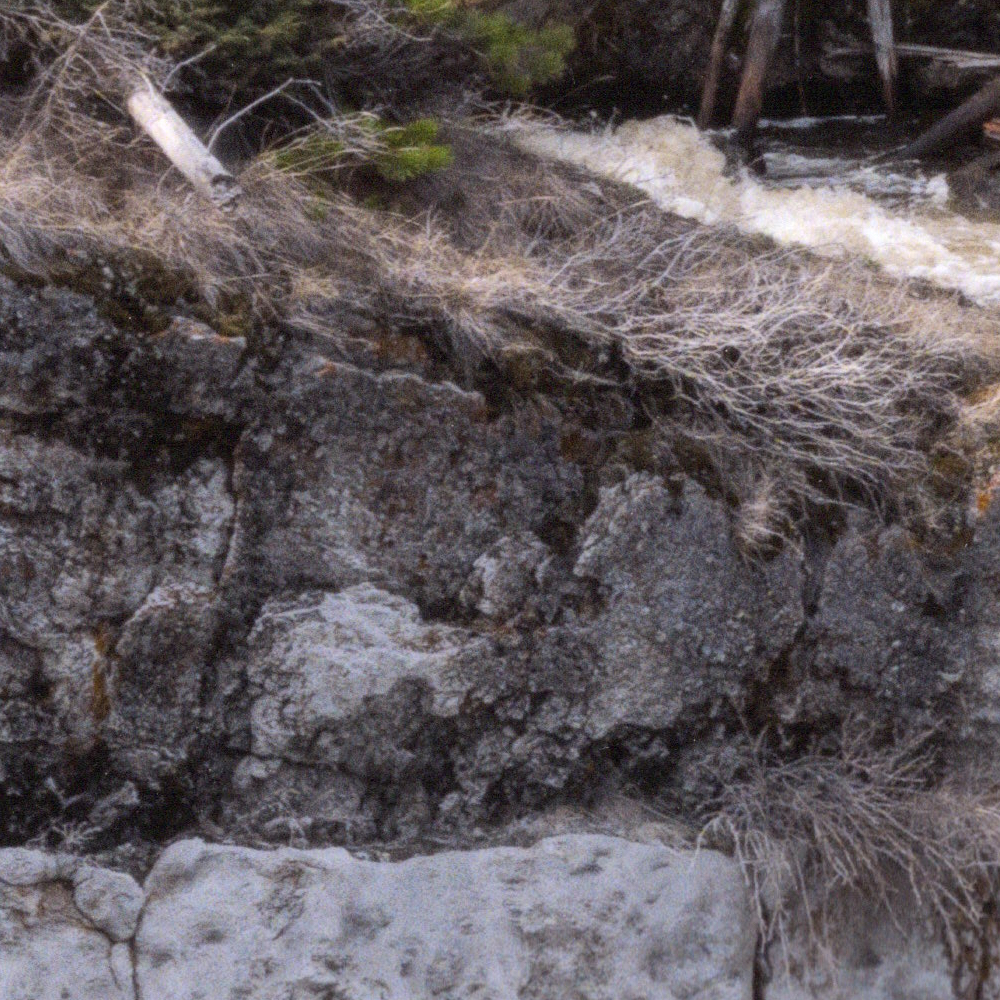
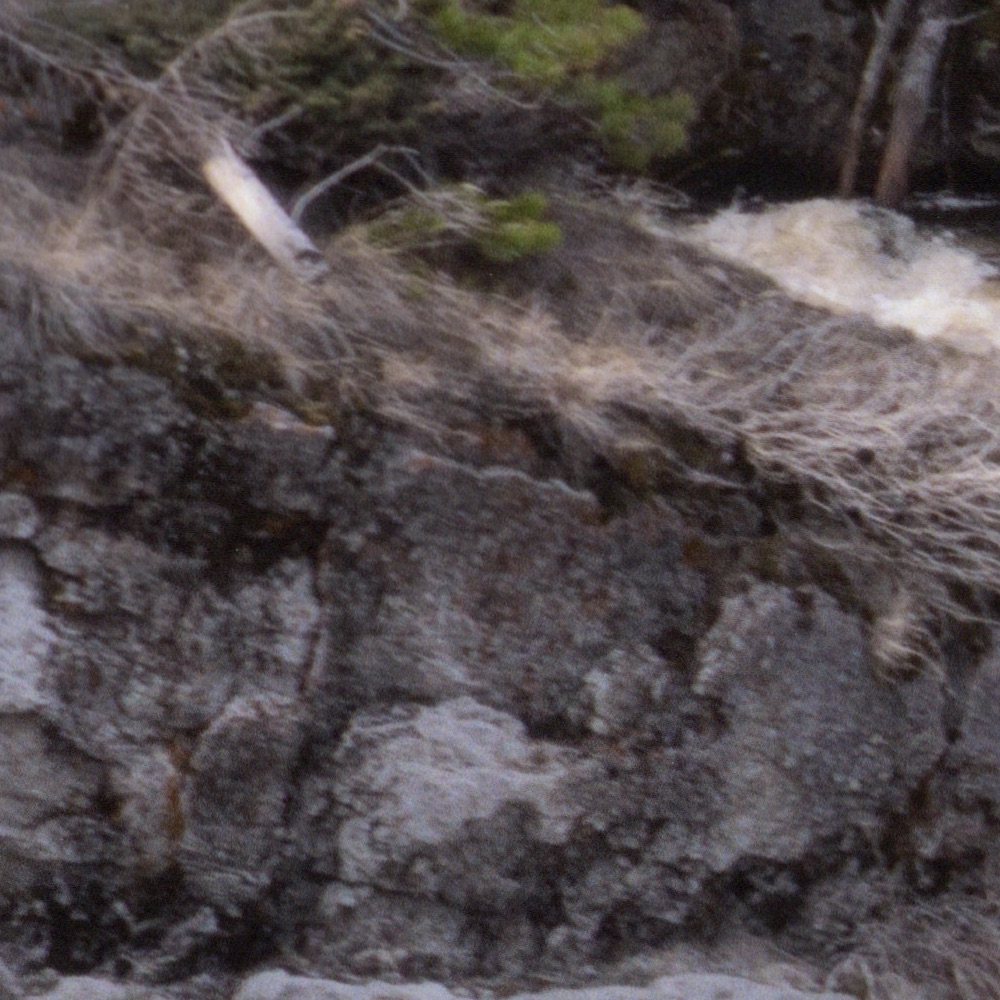
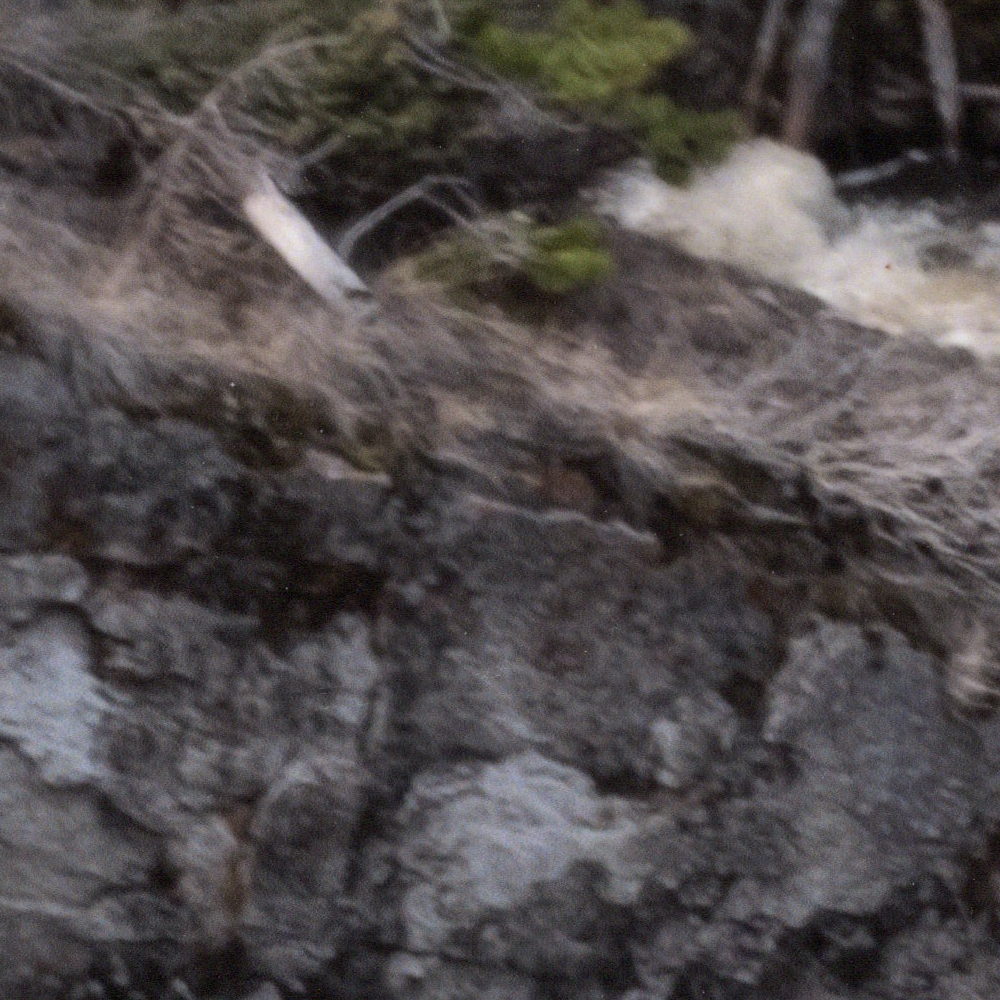
Seeing the astonishing result at 16×20”, I tried the A7r IV and the GFX 100S at 12×18” (on the Epson ET-8550, using some Epson Ultra Premium Luster in 13×19”). The A7r IV is running at 528 dpi at that print size – that should be PLENTY, right? Even up against a printer that can dither 720 dpi? Well, there is a subtle, but distinguishable difference under close inspection. The color and tonality differences are much greater than the resolution difference – but the resolution difference is there, again operating in the region between seen and unseen. This can’t be! Of course that’s part of what makes a good large-format print so compelling – that resolution we can only almost see, the details that matter even though we aren’t fully conscious of them.
Of course, seeing the acuity of the sensor requires acuity-preserving printing techniques – and the methods I used to pick out every scrap of resolution are not the methods I’d normally use for fine-art prints. An example is that my resolution test prints were on Epson Premium Glossy Photo Paper and Ultra Premium Luster Photo Paper (on the Epson ET-8550) and Canon Glossy Photo Paper Pro (on the big Canon Pro-2000).
Ultra-glossy RC papers are not my normal printing choice. I’ll usually print a show on Canson Infinity Platine or the very similar Epson Legacy Platine (both Highly Recommended – see the printing series on this site). Those two papers have been similar enough that profiles are pretty much interchangeable (I’ve used the Canson profile to print the Epson paper on a Canon printer), although ImagePrint DOES provide distinct profiles. There has been a recent round of reformulations on that type of paper – I don’t have very new samples, so I’m not absolutely sure they’re still so similar.
Sometimes I’ll use another baryta or platine type paper for a slightly different look, and I’ve printed for effect on everything from Japanese Washi to silk fabrics. Notably absent from that list is any form of resin-coated paper, especially the ultra-glossy stuff. I really haven’t used RC paper for anything serious in years. On the other hand, darkroom printers who loved Portriga-Rapid or Oriental Seagull for art printing always did resolution testing on Polycontrast Rapid or the like – glossy RC papers showed more detail than anything else, at the cost of various other aspects of the image.
For the same reason, and remembering articles in Camera and Darkroom years ago, I pulled a box of Premium Glossy and a roll of Glossy Photo Paper Pro off a dusty shelf when I set out to see what a difference sensor size and resolution made. Would the results hold on different paper? Most likely not on matte paper, and almost certainly not on canvas – it would take a bigger print… How much bigger? I’d be surprised if 24×36” isn’t enough to show clear differences on most papers (maybe not canvas, and probably not low-resolution oddities like silk or Washi). It should be visible on a good baryta by 16×20” – maybe not at 12×18”? While it will certainly take a larger print for the difference to matter on canvas, canvas prints also tend to be larger.
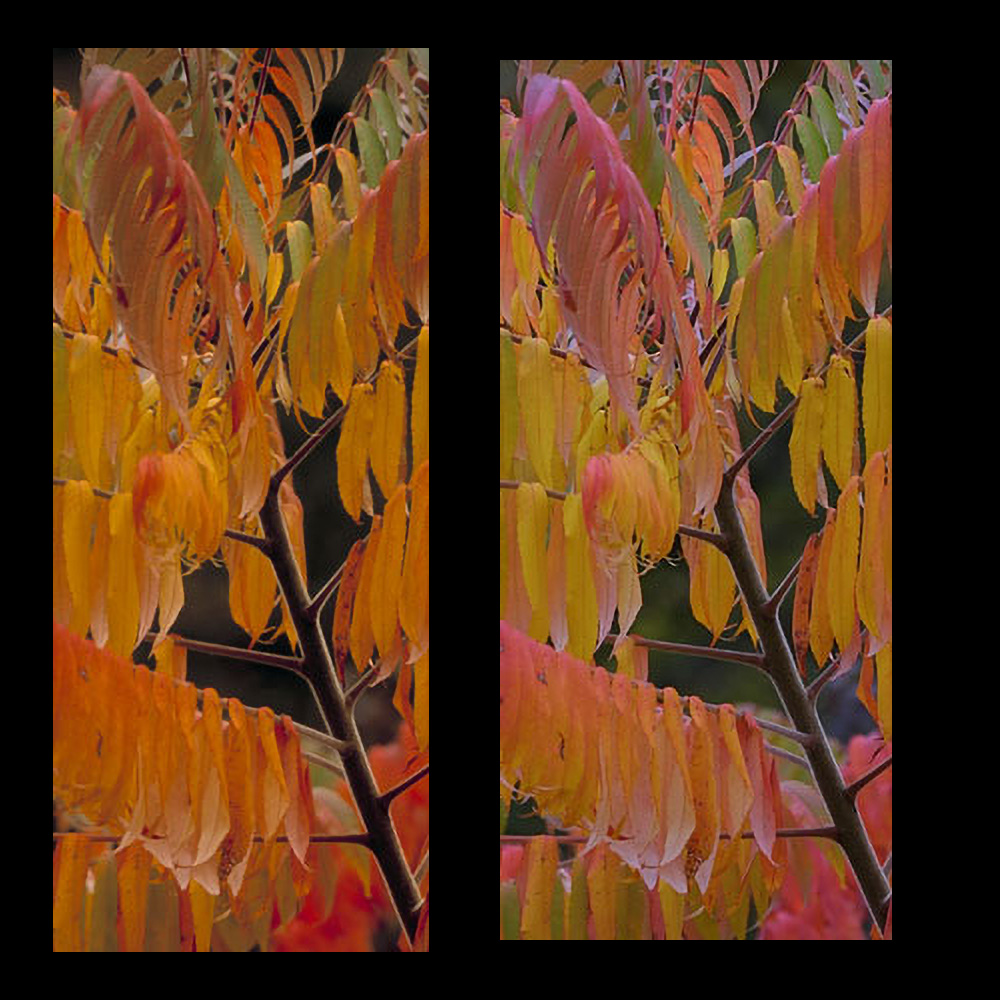
Any modern digital camera with a decent-sized sensor is going to capture more detail than essentially any 35mm film – that transition occurred years ago. Even Micro 4/3’s Same Old Sensor (which just showed up in yet another camera – Olympus’ new E-P7) delivers many aspects of image quality that were only available from a few specialized 35mm films. The resolution and noise/grain performance of the Same Old Sensor exceed all but the slowest of negative films at 35mm, while the dynamic range far exceeds any transparency film. While the Same Old Sensor can’t beat the dynamic range of most color negative films, most better sensors can. Depending on whom you ask, what film you’re talking about, and what aspect of image quality you’re comparing, “better than 35mm” in technical quality probably happened somewhere between 6 and 12 MP on an APS-C sensor. Digital sensors now handily beat film in resolution, noise/grain, color rendition and dynamic range – until you get into the realm of sheet film. Yes, there are still aspects of image quality where film, including 35mm film, is appealing – but they are questions of character, not raw technical quality.
The technical quality of the images from the GFX 100S and the 32-64mm lens is quite simply the highest I have ever worked with. I look forward to working with other lenses as soon as I get a permanent body into our test fleet. As is typical of Fujifilm, GFX 100S images are also highly appealing – with color and tonality that are a good starting point for further work. Some digital images can lack character, but I would rarely if ever criticize Fujifilm in that direction. You are starting with an image that can significantly exceed the quality of drum-scanned 4×5” film (any film I’ve ever dealt with), with not only incredible resolution, but superb dynamic range, low or even non-existent noise (at low ISO (and the GFX goes to ISO 50!), I couldn’t spot the noise even under high magnification) plus color and tonality that I find as much to my taste as anything out there (with a whole bunch of film simulations for folks who don’t like the default).
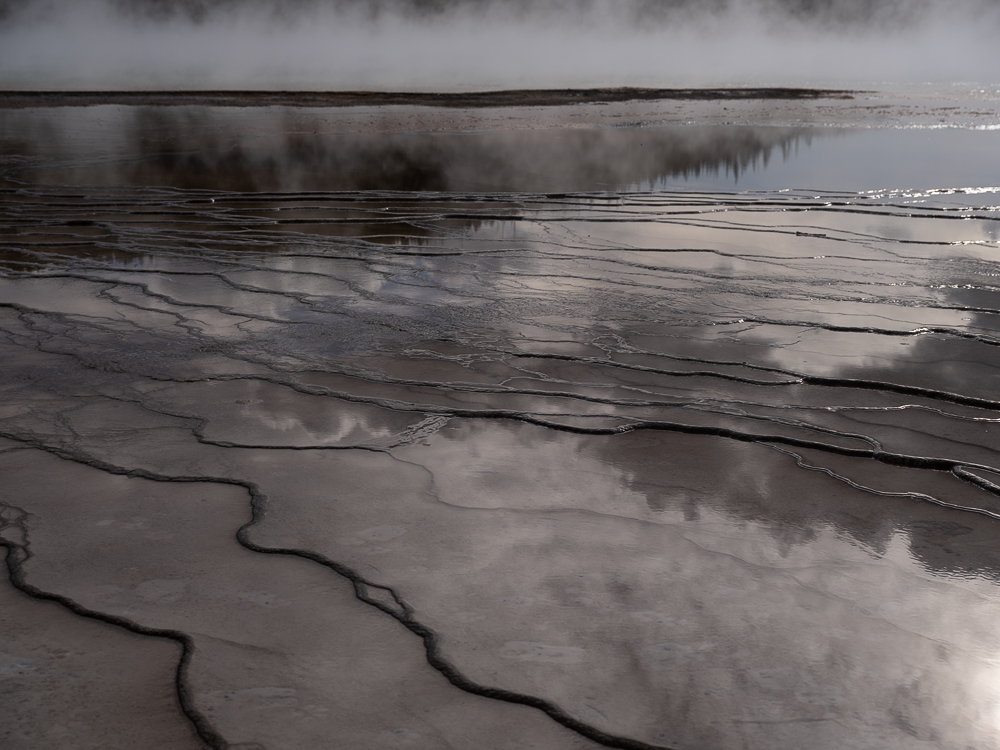
If, as of mid-2021, the GFX 100S is capable of higher technical quality than any other one-piece camera on the market (it is), AND that quality is usable in prints (it is, to a level that surprised me), should you run out and buy one? This assumes you can find one – they’re backordered everywhere. That depends on what you’re doing, and how long you’re willing to wait. If you don’t print, large and frequently, you don’t need it. If your primary interest in photography needs very long lenses, high frame rates or the quickest autofocus, the GFX 100S is beaten at all of these things by most $1000 cameras, and at some of them by some $500 cameras. If you have a significant investment in a full-frame system you are happy with, your brand will probably have a camera in the 100 MP class in a couple of years. What will 100 MP full-frame look like? We don’t know. Maybe the sensors will be this good, maybe they’ll be almost this good, maybe they’ll lose something else in tradeoff for resolution…
If you love the kind of photography at which the GFX 100S excels, however, it is better at it than anything else under $10,000 (and the $10,000 option is its stablemate the GFX 100 – nothing else under $30,000 (new) offers similar quality). If a lot of your work is in landscape, architecture, contemplative portraiture or anything else for which a view camera might once have been the right tool, there is an excellent chance that a GFX 100S is that tool in 2021.
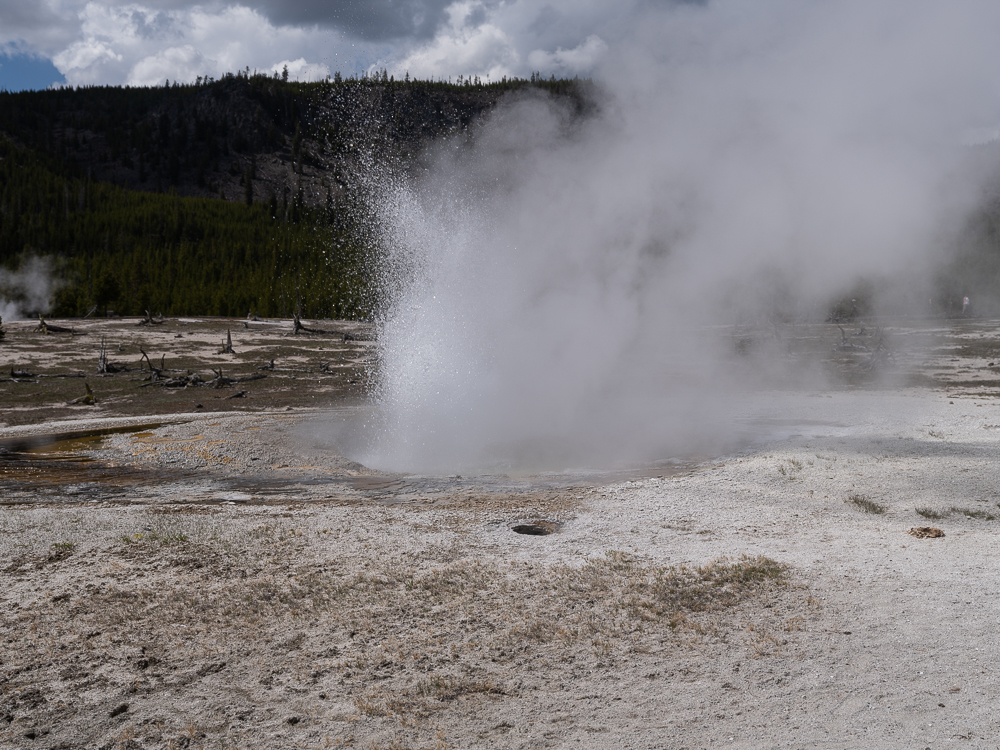
It is an easier tool to carry and use than a view camera – it fits in a medium-sized holster bag and an extra few hundred film holders are the size of a quarter, plus its image stabilizer means that it’s shockingly easy to handhold. I’ve gotten critically sharp images as slow as 1/8 second, although the hit rate below about 1/15 or 1/20 second is fairly low (as it should be – what’s the hit rate handholding a Deardorff?). Despite its ease of use, it rewards contemplation. I leave it on 16-bit raw, partly to avoid the temptation to ever take it out of single-shot drive, single autofocus. It’s not for fast action (except in a pinch when you have nothing else on you) – but it makes really lovely images when you work with it as it is supposed to be used. VERY Highly Recommended (for the right use, and it’s a surprisingly excellent video camera, too) – a likely candidate for Camera of the Year 2021. I’m working on getting a permanent tester, both to look at GFX lenses and as a reference for everything else that comes through. If that happens quickly, it will accompany me backpacking on the Pacific Crest Trail this summer, then be involved in a series of lens tests this fall. If it’s slower, then it will still be seen in lens tests in the fall.
Another Fujifilm camera showed up alongside the GFX 100S, and it’s among the most fun cameras to pass through here in a while. Fujifilm just has a flair for camera design, and the X-T4 is one of their best. It’s an astonishingly versatile little camera, with a great lens lineup, enough video modes to embarrass a Panasonic, AF and frame rates that would have been right at home in the camera well at a Major League ballpark only a few years ago, and a full set of Film Simulation modes from the simple to the specialized (standard negative and chrome at one end of the spectrum, things like Bleach Bypass at the other). Not being much of a JPEG shooter, I rarely use the Film Simulations, but those who do consider them to be by far the best set of “filter” modes on any camera, with only Olympus coming close. It’s a beautifully built, weather-sealed body with every knob, dial or physical control you could possibly want, all logically placed. Think Nikon FM2 with a nice grip and you’re not far off. Of course, it has many more controls than the old Nikon, because the FM2 didn’t need switches for AF (what AF?), drive mode (as fast as your thumb can wind), metering mode etc.
It’s a nostalgic camera, but it’s also an eminently practical one. If you were to wake up each morning knowing that your job was to make photographs, but you didn’t know what of, you couldn’t ask for a better camera, especially if video and compact size are also priorities. The body is a bit smaller than most full-frame mirrorless cameras, but the real savings is in the lenses – since it’s APS-C, the lenses tend to be about 30% smaller than FF equivalents, although somewhat less so once depth of field is factored in.
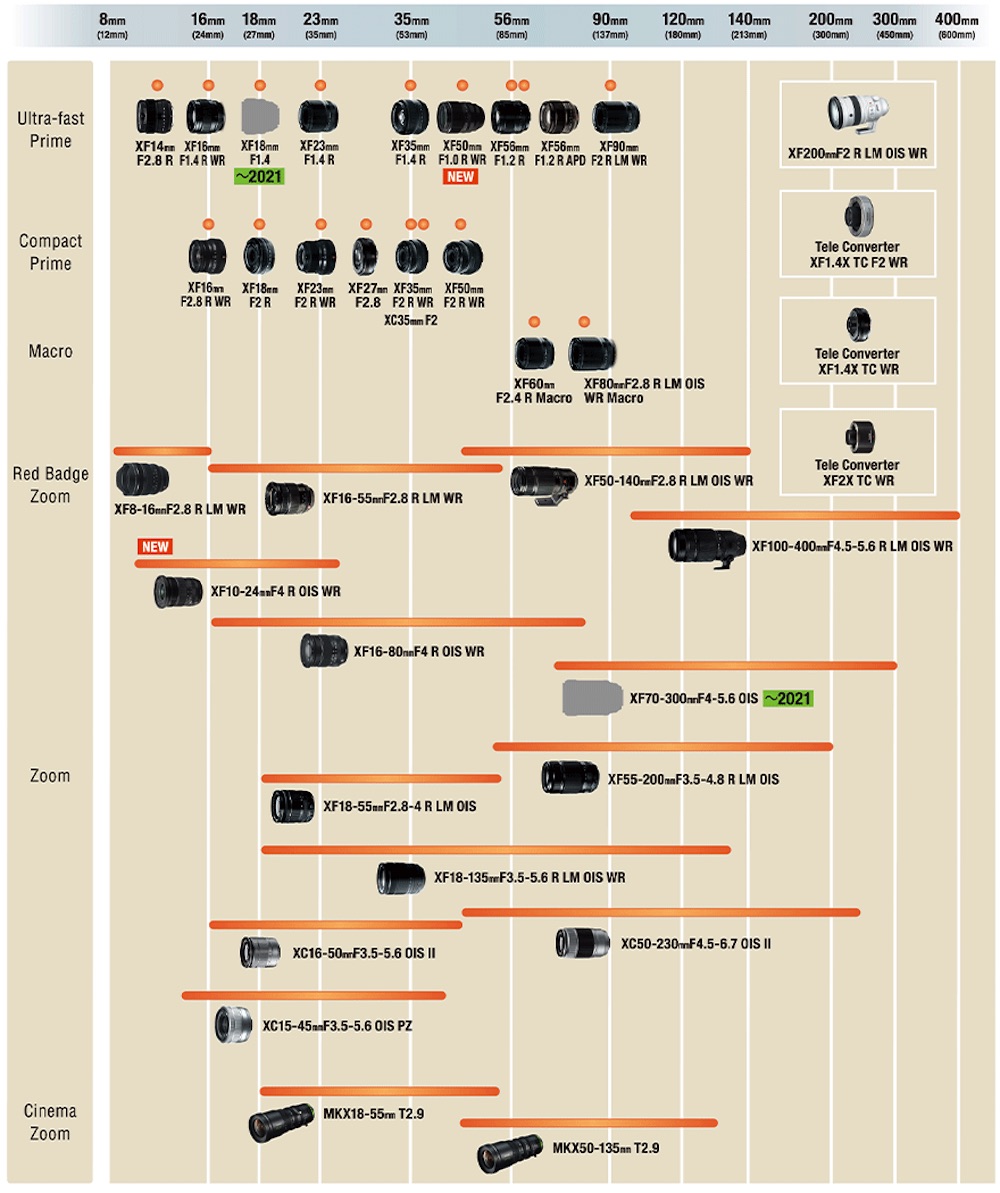
The lenses are also beautiful, both optically and mechanically, and the line is comprehensive – Fujifilm APS-C is neck and neck with Sony full-frame for the most comprehensive mirrorless lineup. The quality of XF lenses I have used (the 16-80mm and new 70-300mm showed up with the X-T4, and I have used many others over the years) has been nearly uniformly excellent. Fujifilm does make a line of entry-level kit lenses, but they mark them XC instead of XF. The little 18-55 XF that is often seen as a kit lens with various Fujifilm bodies is a fantastic little lens (and it really is little), although it’s an older lens. The 16-80mm is the newer version – adding a little (but noticeable) bit at the wide end, quite a bit at the long end (in full-frame terms, it’s about a 24-120mm, so it’s in between a standard zoom and an all-in-one travel lens). It also adds weather sealing, all for a modest increase in size and weight. Just like its older brother, its image quality is MUCH better than a standard kit lens.
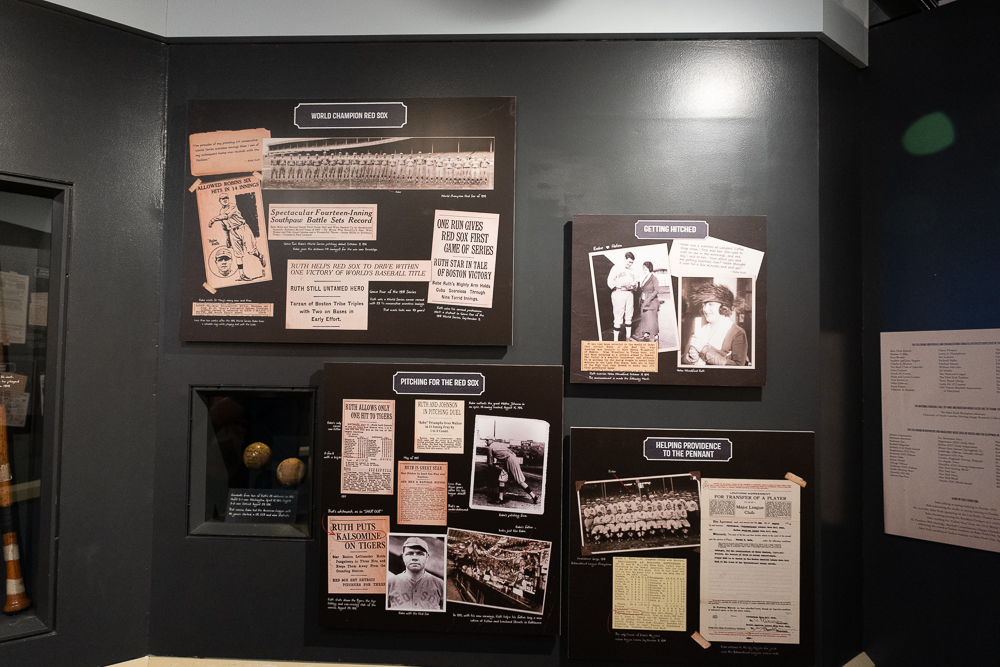
I used the X-T4 a little differently than I did the GFX 100S, because it’s a different kind of camera. I handed it to my cinematographer friend Micah in Yellowstone, who uses an X-T3 routinely, and he loved it. I also took it to the Baseball Hall of Fame, using it in one of the applications where a GFX 100S owner who had an X-T4 as a second camera would be likely to use it – on a non-photographic trip where you want something more versatile than a cellphone, but a small camera with a wide zoom range is more appealing than a medium format monster. Finally, I took it on a brief landscape shoot, just to see how it would work on a type of subject where APS-C wouldn’t be my first choice.
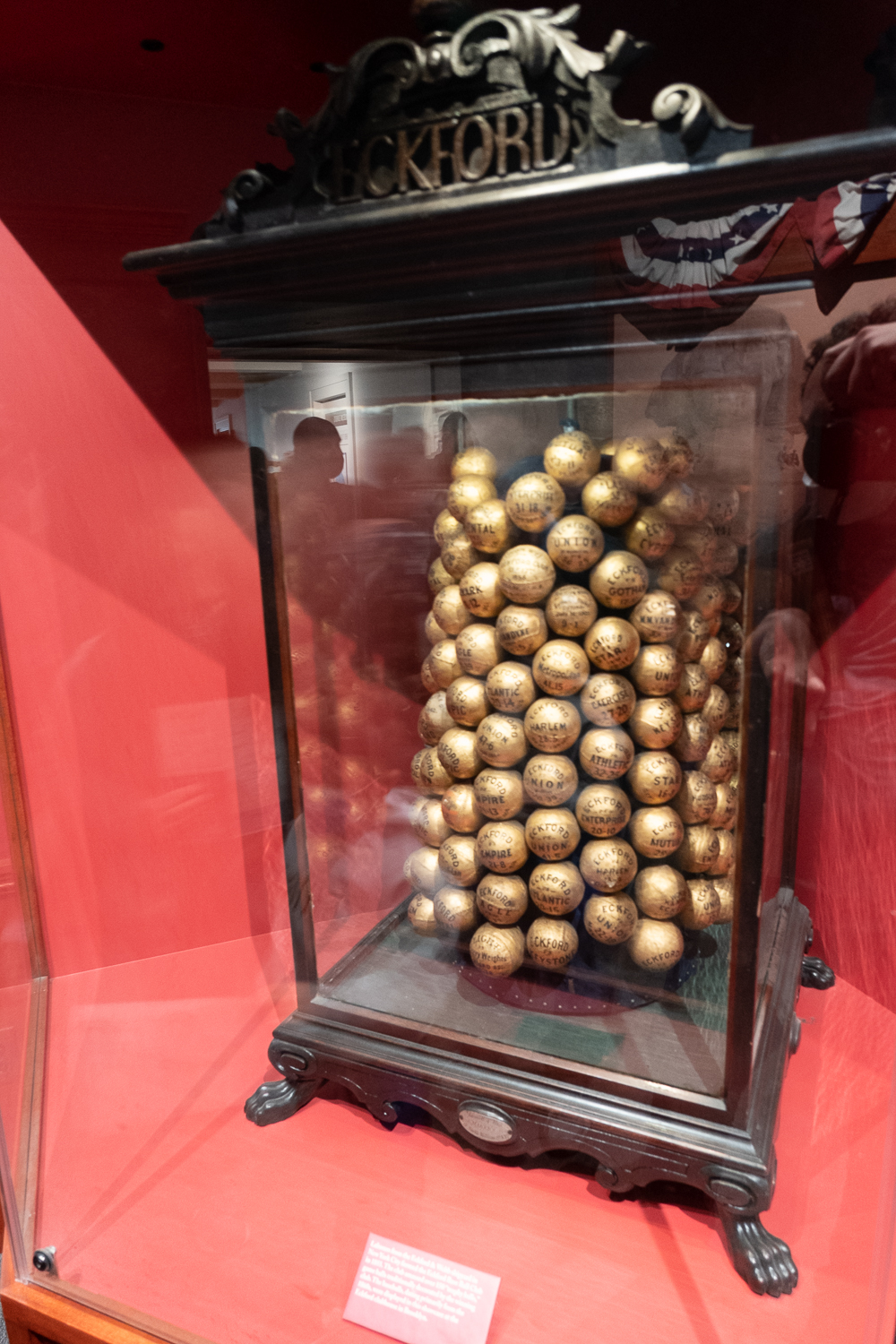
The difference between an X-T3 and an X-T4 is essentially the image stabilizer – they have the same sensor, very similar image processing, and essentially the same image quality choices. Micah has used the X-T3 daily since it came out, and the image quality in both still and video modes is excellent for his uses. He does a lot of ski and hunting/fishing work in fairly extreme conditions, and his X-T3 survived an incredibly rainy trip for a couple of weeks in Alaska (we did not abuse Fujifilm’s test units in this way, but the X-T4 should be at least equivalent – as should the GFX 100S). He was very positive about the stabilization, commenting that it will make the camera much more useful with Fujifilm’s primes (most of which lack lens-based stabilization), and also with third-party lenses (ALL of which lack stabilization) that he sometimes uses for a different effect.
Since the codecs in the X-T3 and X-T4 are very similar, his extensive experience with X-T3 video also applies to the X-T4. The newer model adds 1080p 240fps slow motion, allowing as much as a 10:1 slowdown – tied for the maximum available on any still/video hybrid camera. Micah also finds the F-LOG mode very conducive to color grading, allowing him to adjust the look of the footage after shooting.
What about the stills? Micah uses them professionally, in a business where almost all of his work is displayed online. This is a very important point – no matter what you are doing online, a really good APS-C camera with great lenses is enough. There is no standard image display format on the web that will even come close to the X-T4’s 6240×4160 pixels of resolution. Social media sites do not post images above about 1500×1000 pixels, and other web uses (including high-end gallery sites) are limited to 3000×2000 pixels or so. Even the highest-end Retina and 4K displays are well under 6000 pixels across, with a few very minor exceptions. 4K displays and projectors are common, and becoming more so – but anything larger than that is rare. Printing is the only way of using more than about 4000 pixels in the long dimension, and, while there is some advantage to reducing sizes (it reduces effects from color filtration), 6000 pixels work as well as 12000 for reduction to web sizes. Similarly, sRGB and JPEG are web standards that can’t be escaped when working online – more color depth and dynamic range are useful for editing, but the end product is going to be displayed using standards meant for phones and cheap monitors.
The most important exception to this is depth of field control. It takes a faster lens to achieve the same (shallow) depth of field on a smaller sensor. It’s easy enough to answer an f1.8 lens on full-frame – just use an f1.4 or f1.2 lens on APS-C, and Fujifilm has a significant collection of them. It’s harder to achieve the same depth of field as f1.4 on full-frame – that takes close to an f1.0 lens of equivalent focal length.
Fujifilm only has one of those (a nice 50mm f1.0 portrait lens), and it’s both heavier and more expensive than the 85mm f1.4 Sigma DG DN Art for FE or L mounts. If you get into fast, exotic lenses on full-frame to achieve razor-thin DOF, APS-C can’t keep up – the effect of an f1.2 lens would require something like f0.85, while an ultra-exotic f1.0 lens would require an f0.7 lens, which doesn’t exist (well, there ARE those 50mm f0.7 Zeiss Planars NASA once bought to photograph the dark side of the moon…). The other problem is zooms – an f4 zoom on full-frame is easy to deal with by using an f2.8 zoom on APS-C – Fujiilm makes good ones, but they are at least as heavy and expensive as f4 FF zooms. The tougher question is matching what an f2.8 zoom on full-frame can do. There are very few f2.0 zooms on the market, and none at all from Fujifilm.
If you prefer deeper depth of field anyway, no problem. Fujifilm has a wonderful lineup of lenses, few of which are slow enough to suffer from diffraction effects unless stopped down too far. They offer primes and zooms in every standard focal length, plus a few exotics led by a 200mm f2 that does a nice job of equaling a full-frame 300mm f2.8. Of any line of lenses from a camera manufacturer I’ve used, Fujifilm XF and Nikon Z are of the most UNIFORMLY high quality (Canon RF should likely be in there as well, but I haven’t used those – and my limited experience with Fujifilm GF lenses is superb). There are many good lenses in most lines, and some gems in all of them – but the difference with XF and Z lenses is that I haven’t encountered any duds. There are a number of real dud Sony FE lenses mixed in with the many superb ones (and most of the APS-C E-mount lenses are duds), as an example. Fujifilm XF, Nikon Z (I haven’t used the few non S-Line Z lenses, and those may not be in the same class, just as the Fujinon XC lenses are nothing like XF glass) and Sigma Art are guarantees of quality.
Shallow depth of field is one of two reasons one might prefer the lower end of 24 MP full-frame over Fujifilm APS-C (comparably priced, with advantages to Fujifilm in size, weight, control and build quality). The other is that there are more places to go. If you start a journey in Sony full-frame with an A7C, you don’t get as nice a camera body as an X-T4 (especially the viewfinder!) and you lose a bunch of features, from video modes to film simulations, for very little gain in image quality. Your lenses are bigger and heavier, and you have to pick the great ones a little more carefully.
On the other hand, if you start out with an A7C and decide that you like a more contemplative style of photography, and want to print big, you have a logical body upgrade – an A7r IV. If you want a superb video camera, the A7S III or FX3 will take your lenses. If you want speed and superb autofocus, there’s the A9 II. If you want it all, and can pay for it, an A1 is an upgrade in every dimension. Right now, for most shooting, the $1700 X-T4 is the best camera in the X-series line. The only higher-end option is the rather specialized X-Pro 3, with an unusual hybrid viewfinder that will thrill street photographers, but the same basic image quality as the X-T4. The same $1700 spent on a full-frame body from Canon, Nikon or Sony buys a less capable camera than an X-T4, and lenses will be heavier and more expensive, often without real improvement, BUT it gets you into a system where there are also bodies that do certain things better (for substantially more money). There may even be bodies that do pretty much everything better (for a great deal more money).
Will Fujifilm introduce a higher-end body? For some uses, they can and probably will… They’ve made substantial improvements in autofocus over the years, and it wouldn’t be at all hard to see them come out with something with AF as good as the best Sonys. They are also known to improve existing cameras with major firmware upgrades – the X-T4 itself could see a firmware upgrade that brought it from very good to excellent in focusing speed, although there are no guarantees. The X-T4 is already among the best video cameras on the market, but there are persistent unconfirmed rumors of an even more video-centric entry from Fujifilm.
What they probably can’t do is come up with an APS-C camera with the raw image quality of the best full-frame pixel monsters at any given time – it’s simply too easy for Sony or Nikon to use exactly the same sensor technology, but more than twice the sensor area. If there’s a great 43 MP APS-C sensor available to Fujifilm, they might catch the Z7 II and even the A7r IV – but that same sensor would almost certainly come in full-frame, and the competition would have a 100 MP body with color and dynamic range that are just as good. Of course there’s a good chance that the sensor ALSO comes in medium format, and there’s likely to be a 164 MP GFX out there.
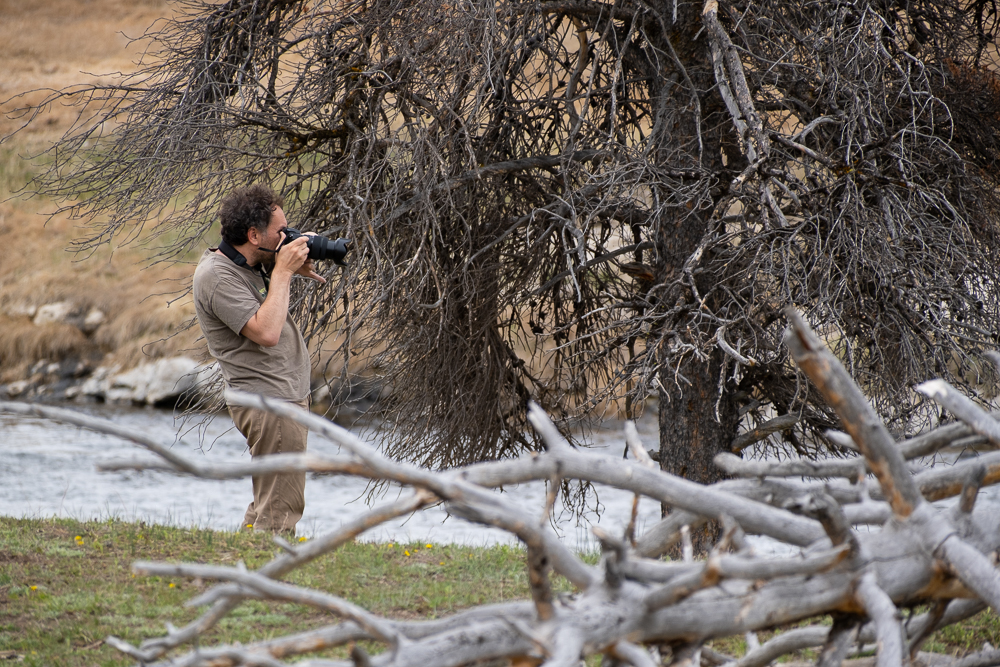
If you’re printing big and care about every last speck of detail, an X-T4 may not be for you, unless it shares your bag with a GFX 100S, a powerful combination. If you share your images online, or print with a desktop printer no larger than 13×19”, the X-T4 may well be your perfect camera – its image quality is very, very good even if it is not state of the art due to the small (but very modern and highly capable) sensor. It’s not the best at any one thing, but it’s very, very good at a whole lot of things.
If I wanted the fastest sports camera I could find, there are faster cameras such as the D6, A1, EOS-1Dx III, and the upcoming Z9 and EOS-R3 – but an X-T4 will probably get the shot with 15 fps and very good AF. If I wanted the best movie camera around, I’d turn to an A7S III, an EOS-R5, an S1H or an A1 – but that’s probably a complete list of hybrids with better than X-T4 video (the GH5 has comparable video modes, but the Same Old Sensor is far inferior to the X-T4 sensor), and they’re all twice as expensive or more. If I wanted better image quality for big prints, any full-frame or medium format pixel monster with twice the pixels (or four times, in the case of the GFX 100/100S) and a carefully chosen lens would be better, but they’re all a lot more money, and most of them aren’t as versatile. I haven’t used it, but the Sony A1 is almost certainly better at pretty much everything – for four times the cost (or to put it another way, for the price of an X-T4 and four nice lenses). Unless you’re printing big, shooting serious cinema or shooting pro sports, there’s a strong argument that the added size, weight and cost of something “better” than an X-T4 isn’t worth it (and it may well not be as much fun to shoot).
The other use for the X-T4 is in an X/GFX pairing, and I found that to be just about ideal at the Hall of Fame. The GFX 100S is a camera for times when photography is your primary goal – and it’s light enough that you can hike it into the High Sierra in the footsteps of Ansel Adams (if I can find one this week amidst the backorders, I’m about to do exactly that). It’s not an ideal camera for a day at the museum, or a kid’s birthday party, or anything else when photography isn’t your primary goal. It’ll do in a pinch for anything except fast action or wildlife, but it’s not really a casual camera. Almost anyone who owns a GFX will also want a more casual camera – it’s a rare photographer who cares enough to own a tool like that, but will be satisfied with a phone when their best tool is the wrong one for the job.
Fujifilm is hoping GFX photographers will choose the X-T4 for that role, and there are good reasons to do so. It shares a similar color rendering and a logic of operation, even though the controls are quite different. If your primary system is a GFX, light and compact are likely to be important goals for your secondary system. A big part of the reason for having a second camera is to have something that isn’t as involving – and the X-T4 is right at the very top end of what one might still consider a “fun little camera”. The difference in bulk between an X-T4 and an A7r IV (for example) is very noticeable, especially where lenses are concerned. An X-T4 will fit in a smaller bag (or, with the right lens, in a big coat pocket) that the Sony won’t.
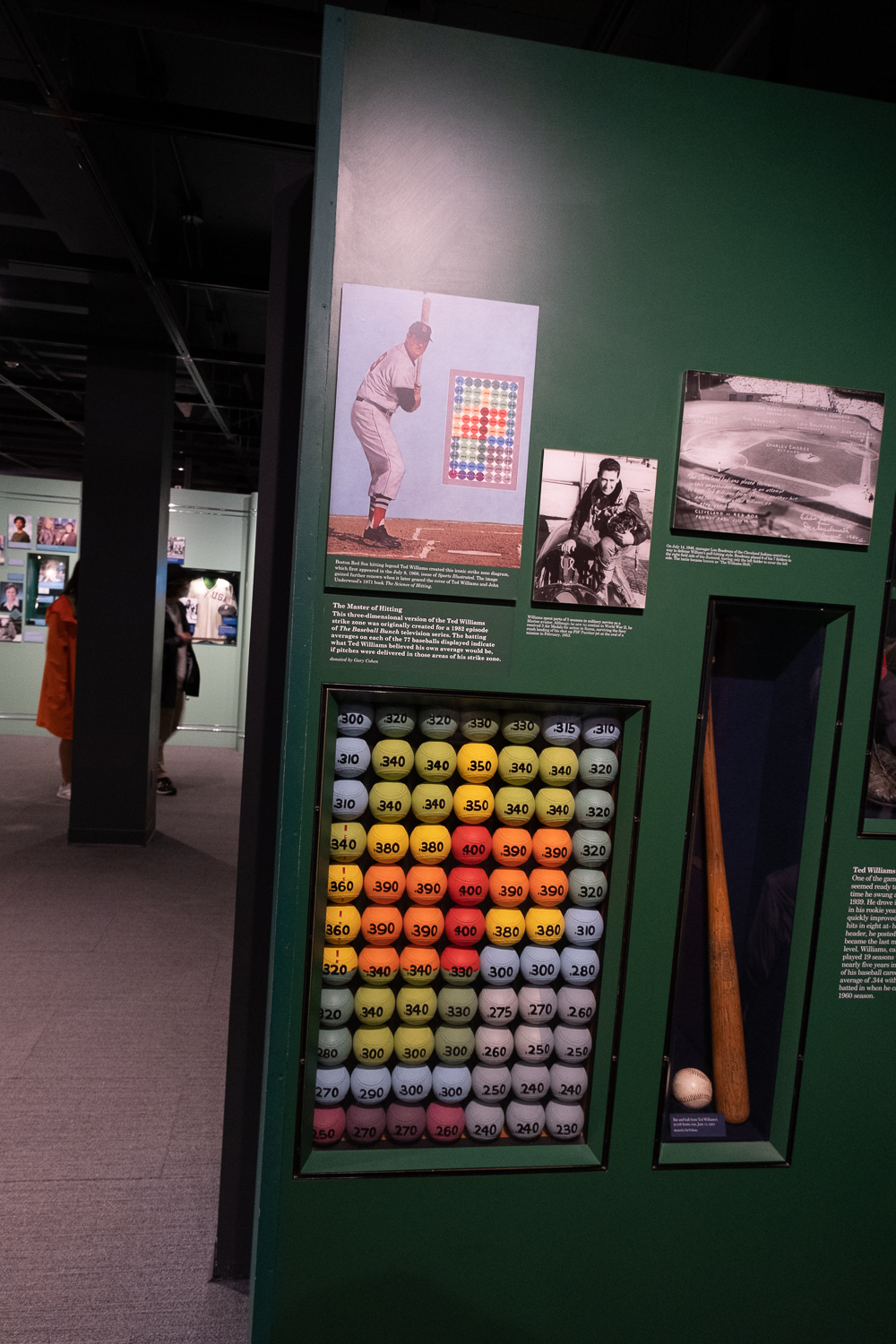
The results in the Hall of Fame were impressive – the X-T4 handled high ISOs and long, stabilized exposures very well. There was less light in there than I was expecting, and I was at ISO 6400 much of the time. I did not expect the image quality I got from a relatively small sensor at high ISO. Unless you are a professional art reproduction specialist, you are probably not expecting to print images from a trip to the museum at large sizes… You’ll probably pass them around via e-mail or social media, maybe you’ll print them as 4×6 or 5×7 images to put in albums or pass in stacks. Maybe you’ll make a Shutterfly, Blurb or equivalent book out of them. For any of these purposes, X-T4 image quality is excellent, even at very high ISOs.
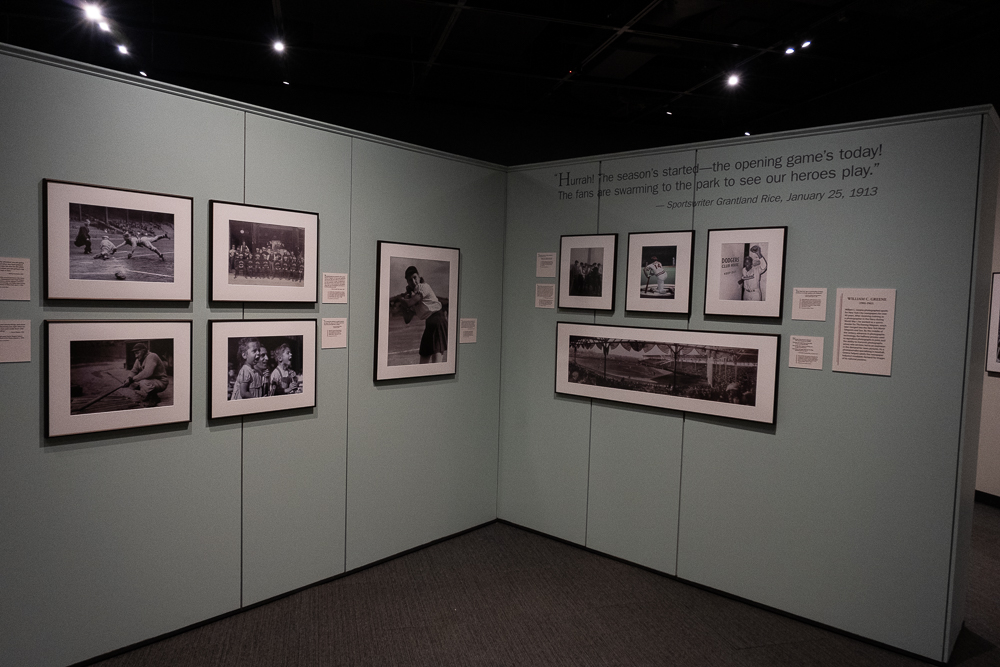
Another reason a GFX photographer might reach for their smaller camera is the use of long lenses, along with faster autofocus and frame rates. Medium format has never really been the choice for sports or wildlife, and why Fujifilm is constantly improving lens selection and autofocus, in fact going places where no medium format system has gone before, it’s still not as good a choice as smaller formats for long reach or action. The X-T4 is a far better choice for these subjects, and it may be the ideal choice depending on what you are doing. If you are photographing wildlife or sports professionally, Sony mirrorless or Canon or Nikon (still primarily DSLR, although both are working on long, fast options for mirrorless) are likely to be better choices. The longest prime in the X system is a 200mm f2 – equivalent to a 300mm f2.8 in full-frame terms. There are zooms that reach 250, 300 and 400mm, but none of them are especially fast.
One of the zooms stands out, because it’s a lot easier to deal with than any full-frame equivalent. Fujifilm’s 70-300mm f4-5.6 weighs only 1.3 lbs, and it offers the equivalent of a 450mm lens on full-frame. Even the lightest option in our telephoto roundup from last fall, the Sigma 100-400mm Contemporary, is nearly twice the weight (and a great deal larger). Yes, the Sigma is a longer lens and one could use a 70-300mm on full-frame and crop down for extra reach. A full-frame Sony 70-300mm f4.5-5.6 G is still 40% heavier than the Fujinon, and only on an A7r IV will the cropped image offer the same resolution as the little Fujifilm lens. An A1 or A7r III will be close, but a 24 MP camera will mean cropping down to about 11 MP to equal the coverage of the Fujinon.

Going in the other direction, lenses in a similar focal length range for Micro 4/3 are only a tiny bit smaller and lighter than the Fujinon. The Panasonic 100-300mm f4-5.6 is a 1.14 lb lens, about two or three ounces lighter. The Olympus 75-300mm f4.8-6.7 knocks another few ounces off, but has a very slow maximum aperture even before considering the depth of field effect of the small sensor. Yes, they offer a narrower angle of view due to the greater crop factor of Micro 4/3, but cropping a 26.7 MP APS-C sensor down to Micro 4/3 offers almost as many pixels as shooting Micro 4/3 to begin with, and the other improvements in the sensor more than make up for the missing few megapixels.
Sony also makes an APS-C dedicated telephoto zoom, with slightly different specifications. Theirs is a 70-350mm, with a nice additional “kick” at the long end, but it’s 1/3 stop slower throughout the range at f4.5-6.3. It’s 10mm longer physically, and 45 grams heavier but very much in the same ballpark as a compact telephoto zoom. The Fujinon offers significantly better close focus than the Sony (while I didn’t realize this, and neither Micah nor I tested it while I had the lens, the Fujinon focuses to 1:3, which is somewhat unusual for a non-Sigma telezoom). While I’ve never seen the Sony lens in person, it is generally well-reviewed. Most of us won’t have a choice between them, because we have either Fujifilm or Sony bodies – and both are good choices for their manufacturer’s APS-C bodies. If choosing between the systems, Fujifilm is an easy choice in APS-C, with a much wider range of quality lenses and bodies. Photographers interested in Sony should almost certainly go straight to their excellent full-frame range, rather than bothering with their APS-C afterthoughts.
Is the little 70-300mm equivalent to the 5 lb Sony 200-600mm f5.6-6.3 or other professional-grade telephotos? No, the 200-600mm offers significantly more reach, especially paired with a sensor with enough resolution to crop. The Sony also offers more depth of field control even though its numerical aperture is slower, due to the sensor size difference. On the other hand, the Sony is a Big White Lens, a long telephoto that dominates a day of photography – the strap and tripod mounts are attached to the lens, not the camera. How far you want to carry the big lens strongly affects subject selection – it is a wonderful lens for serious wildlife or sports photography, but not something you carry casually.
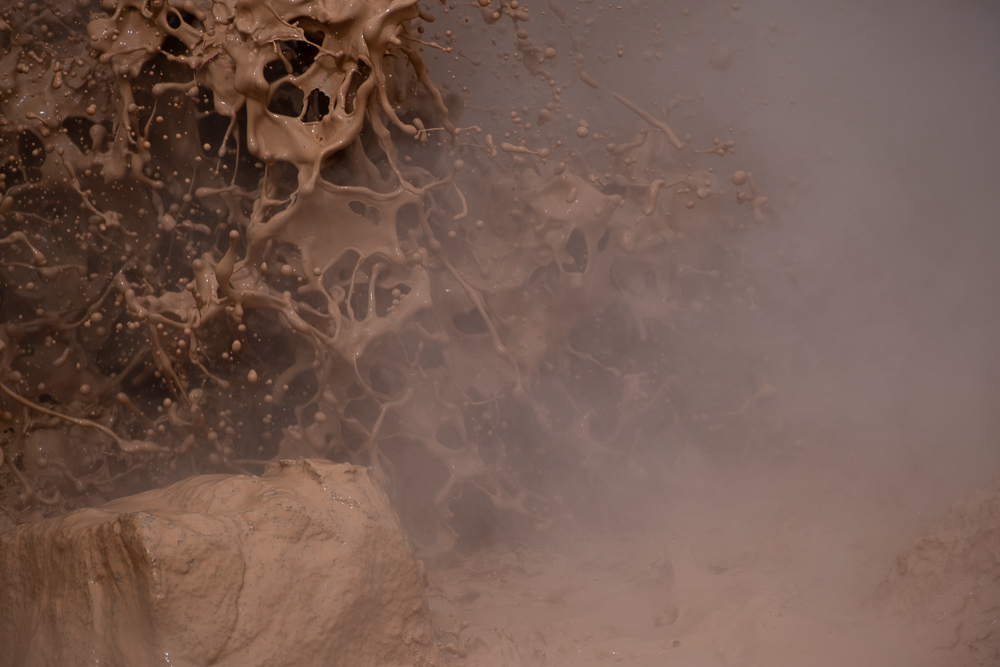
The Fujinon, on the other hand, even more than the Sigma 100-400mm Contemporary, IS a lens you can just throw in a pack, hoping the right subject comes up for it. It’s a sharp, capable lens, although it doesn’t have a great deal of subject isolation since it is both a relatively slow lens and works on a cropped sensor. It has some issues with busy bokeh and corner sharpness, but the former is expected on a slow telephoto and the latter almost never affects long telephoto photography.
A lens like this is one of the reasons cropped-sensor systems still have advantages in these days of affordable full-frame. In order to get the same type of images from a full-frame camera, a photographer would either need a system that was half a pound heavier but twice the price (high-resolution full-frame camera, 70-300mm lens, cropped to APS-C) or a system that was somewhat more expensive, but much heavier and bulkier (~24 MP full-frame camera, 100-400mm or longer lens, no crop). Trying to crop the ~24 MP camera results in low-resolution images, so you either need a very high-resolution camera that can stand the crop or a lens long enough not to have to. The very high-resolution camera is much more expensive and the longer lens is somewhat more expensive, but also significantly bulkier.
Fujifilm’s strategy is interesting and somewhat unique – medium format for ultimate image quality, coupled with really high-quality APS-C for versatility. Just about everybody else is trying to split the difference with full-frame for all purposes beyond the entry level. APS-C, outside of Fujifilm, tends to mean slow kit zooms and few other lens choices optimized for the format. The worst of it may be Canon M, where you can’t even use RF lenses. At least both Nikon and Sony use the same lens mount for APS-C and full-frame mirrorless, opening up the lens options at the cost of some bulk and some unstabilized body/lens combinations. Fujifilm APS-C means a wide choice of highly optimized lenses, and a range of bodies, but only one sensor choice. At least it’s a good one…
Pentax pioneered, and Fujifilm is the current major player in, a medium format market that is adjacent to full-frame, with higher quality files for somewhat, but not outrageously, more money. Much of the rest of the medium format market occupies a different plane entirely, where the cost of entry is several times higher, and gear is much more specialized. For applications where medium format image quality matters and medium format’s drawbacks and cost are acceptable, the quality difference between full-frame and medium format is real.


Fujifilm is saying that a single tool (full-frame) isn’t right for every job… With the original 50 MP sensor, there wasn’t a real advantage in image quality over some full-frame cameras, and the disadvantages of slow AF, higher cost and no image stabilization were real. The 50 MP sensor was too close in quality to the very best of full-frame for comfort. The 100 MP sensor, however, is comfortably ahead of anything I’ve seen, in a way that is highly visible in medium to large sized prints. The AF has gotten a lot better due to on-sensor phase detection, and it’s picked up a very capable image stabilizer, better than most full-frame cameras have. It still has limited long lens selection (and always will – long MF teles are rare) and it’s still not as fast as an action-oriented camera. On the other hand, a carefully made GFX 100S print of a highly detailed subject is just more compelling than a full-frame print of the same subject due to the micro-detail, even at 12×18” and 16×24”. Most of us won’t see the other print as lacking, but the GFX print will draw the eye in.
Was the landscape you were planning on using it on going to move before you could get focus? The GFX is a wonderful camera for landscape, architecture, still life and portraiture – not so much for sports and wildlife. It’s certainly fast enough to use for candids at a wedding, although something quicker might be ideal for the dancing. Many of us either rarely shoot fast action, or we don’t do fast action and large prints at the same time. If that’s true of you, you might be a candidate for the GFX. I used it in Yellowstone, one of the least static landscapes around, and it worked perfectly – geysers, sinkholes and friends are well within its range.. All too often, camera reviews focus on autofocus speed and image quality above ISO 12800 – even on a camera that is often used to shoot landscapes at ISO 50! The GFX 100S happens to have superb high-ISO performance (it’s a current-generation Sony sensor, after all), but it rarely needs it.
The second half of the Fujifilm argument is more controversial – that APS-C and medium format are a better pair of sensor sizes to pursue than either one paired with full-frame. They have the gotten image quality from their 26 MP APS-C cameras very, very close to that of ~24 MP full-frame (the heart of the full-frame market), in a system that is as complete as any and better than most. Most of what they lose in sensor size, they gain back with their lenses. They compete surprisingly well with specialized FF video cameras, because their sensor has an inherently fast readout. They haven’t yet truly tried to compete with the super-fast sports cameras, and perhaps they never will – that’s a relatively small part of the market. To compete against the pixel monsters, they offer medium format.
The great advantage to APS-C is that they can offer more camera for the money, size and weight. The X-T4 is a $1700 camera that can equal the image quality and features of a $2500 ~24 MP full-frame camera, in a somewhat smaller package with significantly smaller lenses. What they can’t do is offer mind-blowing resolution in that package – they’re using the best APS-C sensor they can get, and there simply isn’t a 40+ MP sensor available.
Fujifilm’s two-pronged strategy has produced five Highly Recommended products (actually six, because the BC-W235 battery charger is the best portable charger I’ve seen – kudos to Fujifilm for supporting USB-C so well…). The current image quality crown, unlimited division, goes to the GFX 100S, and it’s not close. Other review sites are deliberately carving the GFX out of comparisons – restricting their fields to “cameras under $4000” or “full-frame cameras”. For landscape, architecture and other fields where speed is not the first priority, there is simply nothing on the market right now that can offer similar quality. My best guess is that Fujifilm will have this field to themselves for another year and a half or more unless Hasselblad finally puts the GFX 100/100S sensor in an X body or a back for the 907X. Late 2022 could see one or more full-frame cameras in the 100 MP range – how will their image quality compare? Sony’s sensor division may well decide to release a ~170 MP sensor in the GFX format alongside the ~100 MP full-frame sensor when it comes – and this gives Fujifilm an easy way to keep their IQ lead.
In addition to the award for best overall image quality, the GFX 100S also gets noted for being an incredibly pleasant camera to use – the grips and controls are as good as I’ve seen, battery life is decent, and the overall experience is truly excellent. Along with the GFX 100S, the 32-64mm f4 is the best zoom lens I’ve had the pleasure of using. I didn’t get to use it directly alongside the Nikkor Z S-line 24-70mm f2.8 or the Sigma Art 24-70mm f2.8, my two favorite high-end full-frame standard zooms. My impression is that it’s a better lens than either, in part because of the sensor it is paired with.
The remaining awards go to the X-T4, 16-80mm f4 and 70-300mm f4-5.6. The X-T4 gets best cropped-sensor camera AND best camera for online/web use. Where massive resolution is not important, this incredibly capable, sturdy package gets any job done. For a reasonable price, it is a highly capable hybrid still/video camera that will get the shot under a huge range of conditions. The two lenses each share a category with another terrific lens. The 16-80mm f4 replaces Fujifilm’s older 18-55mm f2.8-4 on my list of best kit/compact standard zooms, sharing the category with the Nikkor Z 24-70mm f4. The 70-300mm f4-5.6 shares compact telephoto honors with the Sigma Contemporary 100-400mm f5-6.3. Both offer very good image quality in a sub $1000 telephoto that fits in most standard bags and is worth carrying in hopes of a shot.
Dan Wells
June 2021

Lorem ipsum dolor sit amet, consectetur adipiscing elit, sed do eiusmod tempor incididunt ut labore et dolore magna aliqua. Ut enim ad minim veniam, quis nostrud exercitation ullamco laboris nisi ut aliquip ex ea commodo consequat. Duis aute irure dolor in reprehenderit in voluptate velit esse cillum dolore eu fugiat nulla pariatur. Excepteur sint occaecat cupidatat non proident, sunt in culpa qui officia deserunt mollit anim id est laborum.

Lorem ipsum dolor sit amet, consectetur adipiscing elit, sed do eiusmod tempor incididunt ut labore et dolore magna aliqua. Ut enim ad minim veniam, quis nostrud exercitation ullamco laboris nisi ut aliquip ex ea commodo consequat. Duis aute irure dolor in reprehenderit in voluptate velit esse cillum dolore eu fugiat nulla pariatur. Excepteur sint occaecat cupidatat non proident, sunt in culpa qui officia deserunt mollit anim id est laborum.
Lorem ipsum dolor sit amet, consectetur adipiscing elit, sed do eiusmod tempor incididunt ut labore et dolore magna aliqua. Ut enim ad minim veniam, quis nostrud exercitation ullamco laboris nisi ut aliquip ex ea commodo consequat. Duis aute irure dolor in reprehenderit in voluptate velit esse cillum dolore eu fugiat nulla pariatur. Excepteur sint occaecat cupidatat non proident, sunt in culpa qui officia deserunt mollit anim id est laborum.

Lorem ipsum dolor sit amet, consectetur adipiscing elit, sed do eiusmod tempor incididunt ut labore et dolore magna aliqua. Ut enim ad minim veniam, quis nostrud exercitation ullamco laboris nisi ut aliquip ex ea commodo consequat. Duis aute irure dolor in reprehenderit in voluptate velit esse cillum dolore eu fugiat nulla pariatur. Excepteur sint occaecat cupidatat non proident, sunt in culpa qui officia deserunt mollit anim id est laborum.
Lorem ipsum dolor sit amet, consectetur adipiscing elit, sed do eiusmod tempor incididunt ut labore et dolore magna aliqua. Ut enim ad minim veniam, quis nostrud exercitation ullamco laboris nisi ut aliquip ex ea commodo consequat. Duis aute irure dolor in reprehenderit in voluptate velit esse cillum dolore eu fugiat nulla pariatur. Excepteur sint occaecat cupidatat non proident, sunt in culpa qui officia deserunt mollit anim id est laborum.
Lorem ipsum dolor sit amet, consectetur adipiscing elit, sed do eiusmod tempor incididunt ut labore et dolore magna aliqua. Ut enim ad minim veniam, quis nostrud exercitation ullamco laboris nisi ut aliquip ex ea commodo consequat. Duis aute irure dolor in reprehenderit in voluptate velit esse cillum dolore eu fugiat nulla pariatur. Excepteur sint occaecat cupidatat non proident, sunt in culpa qui officia deserunt mollit anim id est laborum.

Lorem ipsum dolor sit amet, consectetur adipiscing elit, sed do eiusmod tempor incididunt ut labore et dolore magna aliqua. Ut enim ad minim veniam, quis nostrud exercitation ullamco laboris nisi ut aliquip ex ea commodo consequat. Duis aute irure dolor in reprehenderit in voluptate velit esse cillum dolore eu fugiat nulla pariatur. Excepteur sint occaecat cupidatat non proident, sunt in culpa qui officia deserunt mollit anim id est laborum.
Lorem ipsum dolor sit amet, consectetur adipiscing elit, sed do eiusmod tempor incididunt ut labore et dolore magna aliqua. Ut enim ad minim veniam, quis nostrud exercitation ullamco laboris nisi ut aliquip ex ea commodo consequat. Duis aute irure dolor in reprehenderit in voluptate velit esse cillum dolore eu fugiat nulla pariatur. Excepteur sint occaecat cupidatat non proident, sunt in culpa qui officia deserunt mollit anim id est laborum.
Lorem ipsum dolor sit amet, consectetur adipiscing elit, sed do eiusmod tempor incididunt ut labore et dolore magna aliqua. Ut enim ad minim veniam, quis nostrud exercitation ullamco laboris nisi ut aliquip ex ea commodo consequat. Duis aute irure dolor in reprehenderit in voluptate velit esse cillum dolore eu fugiat nulla pariatur. Excepteur sint occaecat cupidatat non proident, sunt in culpa qui officia deserunt mollit anim id est laborum.
Lorem ipsum dolor sit amet, consectetur adipiscing elit, sed do eiusmod tempor incididunt ut labore et dolore magna aliqua. Ut enim ad minim veniam, quis nostrud exercitation ullamco laboris nisi ut aliquip ex ea commodo consequat. Duis aute irure dolor in reprehenderit in voluptate velit esse cillum dolore eu fugiat nulla pariatur. Excepteur sint occaecat cupidatat non proident, sunt in culpa qui officia deserunt mollit anim id est laborum.

Lorem ipsum dolor sit amet, consectetur adipiscing elit, sed do eiusmod tempor incididunt ut labore et dolore magna aliqua. Ut enim ad minim veniam, quis nostrud exercitation ullamco laboris nisi ut aliquip ex ea commodo consequat. Duis aute irure dolor in reprehenderit in voluptate velit esse cillum dolore eu fugiat nulla pariatur. Excepteur sint occaecat cupidatat non proident, sunt in culpa qui officia deserunt mollit anim id est laborum.

Lorem ipsum dolor sit amet, consectetur adipiscing elit, sed do eiusmod tempor incididunt ut labore et dolore magna aliqua. Ut enim ad minim veniam, quis nostrud exercitation ullamco laboris nisi ut aliquip ex ea commodo consequat. Duis aute irure dolor in reprehenderit in voluptate velit esse cillum dolore eu fugiat nulla pariatur. Excepteur sint occaecat cupidatat non proident, sunt in culpa qui officia deserunt mollit anim id est laborum.
Lorem ipsum dolor sit amet, consectetur adipiscing elit, sed do eiusmod tempor incididunt ut labore et dolore magna aliqua. Ut enim ad minim veniam, quis nostrud exercitation ullamco laboris nisi ut aliquip ex ea commodo consequat. Duis aute irure dolor in reprehenderit in voluptate velit esse cillum dolore eu fugiat nulla pariatur. Excepteur sint occaecat cupidatat non proident, sunt in culpa qui officia deserunt mollit anim id est laborum.
Lorem ipsum dolor sit amet, consectetur adipiscing elit, sed do eiusmod tempor incididunt ut labore et dolore magna aliqua. Ut enim ad minim veniam, quis nostrud exercitation ullamco laboris nisi ut aliquip ex ea commodo consequat. Duis aute irure dolor in reprehenderit in voluptate velit esse cillum dolore eu fugiat nulla pariatur. Excepteur sint occaecat cupidatat non proident, sunt in culpa qui officia deserunt mollit anim id est laborum.

Lorem ipsum dolor sit amet, consectetur adipiscing elit, sed do eiusmod tempor incididunt ut labore et dolore magna aliqua. Ut enim ad minim veniam, quis nostrud exercitation ullamco laboris nisi ut aliquip ex ea commodo consequat. Duis aute irure dolor in reprehenderit in voluptate velit esse cillum dolore eu fugiat nulla pariatur. Excepteur sint occaecat cupidatat non proident, sunt in culpa qui officia deserunt mollit anim id est laborum.
Lorem ipsum dolor sit amet, consectetur adipiscing elit, sed do eiusmod tempor incididunt ut labore et dolore magna aliqua. Ut enim ad minim veniam, quis nostrud exercitation ullamco laboris nisi ut aliquip ex ea commodo consequat. Duis aute irure dolor in reprehenderit in voluptate velit esse cillum dolore eu fugiat nulla pariatur. Excepteur sint occaecat cupidatat non proident, sunt in culpa qui officia deserunt mollit anim id est laborum.
Lorem ipsum dolor sit amet, consectetur adipiscing elit, sed do eiusmod tempor incididunt ut labore et dolore magna aliqua. Ut enim ad minim veniam, quis nostrud exercitation ullamco laboris nisi ut aliquip ex ea commodo consequat. Duis aute irure dolor in reprehenderit in voluptate velit esse cillum dolore eu fugiat nulla pariatur. Excepteur sint occaecat cupidatat non proident, sunt in culpa qui officia deserunt mollit anim id est laborum.

Lorem ipsum dolor sit amet, consectetur adipiscing elit, sed do eiusmod tempor incididunt ut labore et dolore magna aliqua. Ut enim ad minim veniam, quis nostrud exercitation ullamco laboris nisi ut aliquip ex ea commodo consequat. Duis aute irure dolor in reprehenderit in voluptate velit esse cillum dolore eu fugiat nulla pariatur. Excepteur sint occaecat cupidatat non proident, sunt in culpa qui officia deserunt mollit anim id est laborum.
Lorem ipsum dolor sit amet, consectetur adipiscing elit, sed do eiusmod tempor incididunt ut labore et dolore magna aliqua. Ut enim ad minim veniam, quis nostrud exercitation ullamco laboris nisi ut aliquip ex ea commodo consequat. Duis aute irure dolor in reprehenderit in voluptate velit esse cillum dolore eu fugiat nulla pariatur. Excepteur sint occaecat cupidatat non proident, sunt in culpa qui officia deserunt mollit anim id est laborum.
Lorem ipsum dolor sit amet, consectetur adipiscing elit, sed do eiusmod tempor incididunt ut labore et dolore magna aliqua. Ut enim ad minim veniam, quis nostrud exercitation ullamco laboris nisi ut aliquip ex ea commodo consequat. Duis aute irure dolor in reprehenderit in voluptate velit esse cillum dolore eu fugiat nulla pariatur. Excepteur sint occaecat cupidatat non proident, sunt in culpa qui officia deserunt mollit anim id est laborum.

Lorem ipsum dolor sit amet, consectetur adipiscing elit, sed do eiusmod tempor incididunt ut labore et dolore magna aliqua. Ut enim ad minim veniam, quis nostrud exercitation ullamco laboris nisi ut aliquip ex ea commodo consequat. Duis aute irure dolor in reprehenderit in voluptate velit esse cillum dolore eu fugiat nulla pariatur. Excepteur sint occaecat cupidatat non proident, sunt in culpa qui officia deserunt mollit anim id est laborum.
Lorem ipsum dolor sit amet, consectetur adipiscing elit, sed do eiusmod tempor incididunt ut labore et dolore magna aliqua. Ut enim ad minim veniam, quis nostrud exercitation ullamco laboris nisi ut aliquip ex ea commodo consequat. Duis aute irure dolor in reprehenderit in voluptate velit esse cillum dolore eu fugiat nulla pariatur. Excepteur sint occaecat cupidatat non proident, sunt in culpa qui officia deserunt mollit anim id est laborum.
Lorem ipsum dolor sit amet, consectetur adipiscing elit, sed do eiusmod tempor incididunt ut labore et dolore magna aliqua. Ut enim ad minim veniam, quis nostrud exercitation ullamco laboris nisi ut aliquip ex ea commodo consequat. Duis aute irure dolor in reprehenderit in voluptate velit esse cillum dolore eu fugiat nulla pariatur. Excepteur sint occaecat cupidatat non proident, sunt in culpa qui officia deserunt mollit anim id est laborum.
Lorem ipsum dolor sit amet, consectetur adipiscing elit, sed do eiusmod tempor incididunt ut labore et dolore magna aliqua. Ut enim ad minim veniam, quis nostrud exercitation ullamco laboris nisi ut aliquip ex ea commodo consequat. Duis aute irure dolor in reprehenderit in voluptate velit esse cillum dolore eu fugiat nulla pariatur. Excepteur sint occaecat cupidatat non proident, sunt in culpa qui officia deserunt mollit anim id est laborum.

Lorem ipsum dolor sit amet, consectetur adipiscing elit, sed do eiusmod tempor incididunt ut labore et dolore magna aliqua. Ut enim ad minim veniam, quis nostrud exercitation ullamco laboris nisi ut aliquip ex ea commodo consequat. Duis aute irure dolor in reprehenderit in voluptate velit esse cillum dolore eu fugiat nulla pariatur. Excepteur sint occaecat cupidatat non proident, sunt in culpa qui officia deserunt mollit anim id est laborum.
Lorem ipsum dolor sit amet, consectetur adipiscing elit, sed do eiusmod tempor incididunt ut labore et dolore magna aliqua. Ut enim ad minim veniam, quis nostrud exercitation ullamco laboris nisi ut aliquip ex ea commodo consequat. Duis aute irure dolor in reprehenderit in voluptate velit esse cillum dolore eu fugiat nulla pariatur. Excepteur sint occaecat cupidatat non proident, sunt in culpa qui officia deserunt mollit anim id est laborum.

Lorem ipsum dolor sit amet, consectetur adipiscing elit, sed do eiusmod tempor incididunt ut labore et dolore magna aliqua. Ut enim ad minim veniam, quis nostrud exercitation ullamco laboris nisi ut aliquip ex ea commodo consequat. Duis aute irure dolor in reprehenderit in voluptate velit esse cillum dolore eu fugiat nulla pariatur. Excepteur sint occaecat cupidatat non proident, sunt in culpa qui officia deserunt mollit anim id est laborum.
Lorem ipsum dolor sit amet, consectetur adipiscing elit, sed do eiusmod tempor incididunt ut labore et dolore magna aliqua. Ut enim ad minim veniam, quis nostrud exercitation ullamco laboris nisi ut aliquip ex ea commodo consequat. Duis aute irure dolor in reprehenderit in voluptate velit esse cillum dolore eu fugiat nulla pariatur. Excepteur sint occaecat cupidatat non proident, sunt in culpa qui officia deserunt mollit anim id est laborum.

Lorem ipsum dolor sit amet, consectetur adipiscing elit, sed do eiusmod tempor incididunt ut labore et dolore magna aliqua. Ut enim ad minim veniam, quis nostrud exercitation ullamco laboris nisi ut aliquip ex ea commodo consequat. Duis aute irure dolor in reprehenderit in voluptate velit esse cillum dolore eu fugiat nulla pariatur. Excepteur sint occaecat cupidatat non proident, sunt in culpa qui officia deserunt mollit anim id est laborum.

Lorem ipsum dolor sit amet, consectetur adipiscing elit, sed do eiusmod tempor incididunt ut labore et dolore magna aliqua. Ut enim ad minim veniam, quis nostrud exercitation ullamco laboris nisi ut aliquip ex ea commodo consequat. Duis aute irure dolor in reprehenderit in voluptate velit esse cillum dolore eu fugiat nulla pariatur. Excepteur sint occaecat cupidatat non proident, sunt in culpa qui officia deserunt mollit anim id est laborum.
Lorem ipsum dolor sit amet, consectetur adipiscing elit, sed do eiusmod tempor incididunt ut labore et dolore magna aliqua. Ut enim ad minim veniam, quis nostrud exercitation ullamco laboris nisi ut aliquip ex ea commodo consequat. Duis aute irure dolor in reprehenderit in voluptate velit esse cillum dolore eu fugiat nulla pariatur. Excepteur sint occaecat cupidatat non proident, sunt in culpa qui officia deserunt mollit anim id est laborum.

Lorem ipsum dolor sit amet, consectetur adipiscing elit, sed do eiusmod tempor incididunt ut labore et dolore magna aliqua. Ut enim ad minim veniam, quis nostrud exercitation ullamco laboris nisi ut aliquip ex ea commodo consequat. Duis aute irure dolor in reprehenderit in voluptate velit esse cillum dolore eu fugiat nulla pariatur. Excepteur sint occaecat cupidatat non proident, sunt in culpa qui officia deserunt mollit anim id est laborum.
Lorem ipsum dolor sit amet, consectetur adipiscing elit, sed do eiusmod tempor incididunt ut labore et dolore magna aliqua. Ut enim ad minim veniam, quis nostrud exercitation ullamco laboris nisi ut aliquip ex ea commodo consequat. Duis aute irure dolor in reprehenderit in voluptate velit esse cillum dolore eu fugiat nulla pariatur. Excepteur sint occaecat cupidatat non proident, sunt in culpa qui officia deserunt mollit anim id est laborum.
Lorem ipsum dolor sit amet, consectetur adipiscing elit, sed do eiusmod tempor incididunt ut labore et dolore magna aliqua. Ut enim ad minim veniam, quis nostrud exercitation ullamco laboris nisi ut aliquip ex ea commodo consequat. Duis aute irure dolor in reprehenderit in voluptate velit esse cillum dolore eu fugiat nulla pariatur. Excepteur sint occaecat cupidatat non proident, sunt in culpa qui officia deserunt mollit anim id est laborum.
Lorem ipsum dolor sit amet, consectetur adipiscing elit, sed do eiusmod tempor incididunt ut labore et dolore magna aliqua. Ut enim ad minim veniam, quis nostrud exercitation ullamco laboris nisi ut aliquip ex ea commodo consequat. Duis aute irure dolor in reprehenderit in voluptate velit esse cillum dolore eu fugiat nulla pariatur. Excepteur sint occaecat cupidatat non proident, sunt in culpa qui officia deserunt mollit anim id est laborum.

Lorem ipsum dolor sit amet, consectetur adipiscing elit, sed do eiusmod tempor incididunt ut labore et dolore magna aliqua. Ut enim ad minim veniam, quis nostrud exercitation ullamco laboris nisi ut aliquip ex ea commodo consequat. Duis aute irure dolor in reprehenderit in voluptate velit esse cillum dolore eu fugiat nulla pariatur. Excepteur sint occaecat cupidatat non proident, sunt in culpa qui officia deserunt mollit anim id est laborum.
Lorem ipsum dolor sit amet, consectetur adipiscing elit, sed do eiusmod tempor incididunt ut labore et dolore magna aliqua. Ut enim ad minim veniam, quis nostrud exercitation ullamco laboris nisi ut aliquip ex ea commodo consequat. Duis aute irure dolor in reprehenderit in voluptate velit esse cillum dolore eu fugiat nulla pariatur. Excepteur sint occaecat cupidatat non proident, sunt in culpa qui officia deserunt mollit anim id est laborum.
Lorem ipsum dolor sit amet, consectetur adipiscing elit, sed do eiusmod tempor incididunt ut labore et dolore magna aliqua. Ut enim ad minim veniam, quis nostrud exercitation ullamco laboris nisi ut aliquip ex ea commodo consequat. Duis aute irure dolor in reprehenderit in voluptate velit esse cillum dolore eu fugiat nulla pariatur. Excepteur sint occaecat cupidatat non proident, sunt in culpa qui officia deserunt mollit anim id est laborum.
Lorem ipsum dolor sit amet, consectetur adipiscing elit, sed do eiusmod tempor incididunt ut labore et dolore magna aliqua. Ut enim ad minim veniam, quis nostrud exercitation ullamco laboris nisi ut aliquip ex ea commodo consequat. Duis aute irure dolor in reprehenderit in voluptate velit esse cillum dolore eu fugiat nulla pariatur. Excepteur sint occaecat cupidatat non proident, sunt in culpa qui officia deserunt mollit anim id est laborum.

Lorem ipsum dolor sit amet, consectetur adipiscing elit, sed do eiusmod tempor incididunt ut labore et dolore magna aliqua. Ut enim ad minim veniam, quis nostrud exercitation ullamco laboris nisi ut aliquip ex ea commodo consequat. Duis aute irure dolor in reprehenderit in voluptate velit esse cillum dolore eu fugiat nulla pariatur. Excepteur sint occaecat cupidatat non proident, sunt in culpa qui officia deserunt mollit anim id est laborum.
Lorem ipsum dolor sit amet, consectetur adipiscing elit, sed do eiusmod tempor incididunt ut labore et dolore magna aliqua. Ut enim ad minim veniam, quis nostrud exercitation ullamco laboris nisi ut aliquip ex ea commodo consequat. Duis aute irure dolor in reprehenderit in voluptate velit esse cillum dolore eu fugiat nulla pariatur. Excepteur sint occaecat cupidatat non proident, sunt in culpa qui officia deserunt mollit anim id est laborum.

Lorem ipsum dolor sit amet, consectetur adipiscing elit, sed do eiusmod tempor incididunt ut labore et dolore magna aliqua. Ut enim ad minim veniam, quis nostrud exercitation ullamco laboris nisi ut aliquip ex ea commodo consequat. Duis aute irure dolor in reprehenderit in voluptate velit esse cillum dolore eu fugiat nulla pariatur. Excepteur sint occaecat cupidatat non proident, sunt in culpa qui officia deserunt mollit anim id est laborum.
Lorem ipsum dolor sit amet, consectetur adipiscing elit, sed do eiusmod tempor incididunt ut labore et dolore magna aliqua. Ut enim ad minim veniam, quis nostrud exercitation ullamco laboris nisi ut aliquip ex ea commodo consequat. Duis aute irure dolor in reprehenderit in voluptate velit esse cillum dolore eu fugiat nulla pariatur. Excepteur sint occaecat cupidatat non proident, sunt in culpa qui officia deserunt mollit anim id est laborum.

Lorem ipsum dolor sit amet, consectetur adipiscing elit, sed do eiusmod tempor incididunt ut labore et dolore magna aliqua. Ut enim ad minim veniam, quis nostrud exercitation ullamco laboris nisi ut aliquip ex ea commodo consequat. Duis aute irure dolor in reprehenderit in voluptate velit esse cillum dolore eu fugiat nulla pariatur. Excepteur sint occaecat cupidatat non proident, sunt in culpa qui officia deserunt mollit anim id est laborum.

Lorem ipsum dolor sit amet, consectetur adipiscing elit, sed do eiusmod tempor incididunt ut labore et dolore magna aliqua. Ut enim ad minim veniam, quis nostrud exercitation ullamco laboris nisi ut aliquip ex ea commodo consequat. Duis aute irure dolor in reprehenderit in voluptate velit esse cillum dolore eu fugiat nulla pariatur. Excepteur sint occaecat cupidatat non proident, sunt in culpa qui officia deserunt mollit anim id est laborum.
Lorem ipsum dolor sit amet, consectetur adipiscing elit, sed do eiusmod tempor incididunt ut labore et dolore magna aliqua. Ut enim ad minim veniam, quis nostrud exercitation ullamco laboris nisi ut aliquip ex ea commodo consequat. Duis aute irure dolor in reprehenderit in voluptate velit esse cillum dolore eu fugiat nulla pariatur. Excepteur sint occaecat cupidatat non proident, sunt in culpa qui officia deserunt mollit anim id est laborum.
Lorem ipsum dolor sit amet, consectetur adipiscing elit, sed do eiusmod tempor incididunt ut labore et dolore magna aliqua. Ut enim ad minim veniam, quis nostrud exercitation ullamco laboris nisi ut aliquip ex ea commodo consequat. Duis aute irure dolor in reprehenderit in voluptate velit esse cillum dolore eu fugiat nulla pariatur. Excepteur sint occaecat cupidatat non proident, sunt in culpa qui officia deserunt mollit anim id est laborum.

Lorem ipsum dolor sit amet, consectetur adipiscing elit, sed do eiusmod tempor incididunt ut labore et dolore magna aliqua. Ut enim ad minim veniam, quis nostrud exercitation ullamco laboris nisi ut aliquip ex ea commodo consequat. Duis aute irure dolor in reprehenderit in voluptate velit esse cillum dolore eu fugiat nulla pariatur. Excepteur sint occaecat cupidatat non proident, sunt in culpa qui officia deserunt mollit anim id est laborum.
Lorem ipsum dolor sit amet, consectetur adipiscing elit, sed do eiusmod tempor incididunt ut labore et dolore magna aliqua. Ut enim ad minim veniam, quis nostrud exercitation ullamco laboris nisi ut aliquip ex ea commodo consequat. Duis aute irure dolor in reprehenderit in voluptate velit esse cillum dolore eu fugiat nulla pariatur. Excepteur sint occaecat cupidatat non proident, sunt in culpa qui officia deserunt mollit anim id est laborum.
Lorem ipsum dolor sit amet, consectetur adipiscing elit, sed do eiusmod tempor incididunt ut labore et dolore magna aliqua. Ut enim ad minim veniam, quis nostrud exercitation ullamco laboris nisi ut aliquip ex ea commodo consequat. Duis aute irure dolor in reprehenderit in voluptate velit esse cillum dolore eu fugiat nulla pariatur. Excepteur sint occaecat cupidatat non proident, sunt in culpa qui officia deserunt mollit anim id est laborum.
Lorem ipsum dolor sit amet, consectetur adipiscing elit, sed do eiusmod tempor incididunt ut labore et dolore magna aliqua. Ut enim ad minim veniam, quis nostrud exercitation ullamco laboris nisi ut aliquip ex ea commodo consequat. Duis aute irure dolor in reprehenderit in voluptate velit esse cillum dolore eu fugiat nulla pariatur. Excepteur sint occaecat cupidatat non proident, sunt in culpa qui officia deserunt mollit anim id est laborum.

Lorem ipsum dolor sit amet, consectetur adipiscing elit, sed do eiusmod tempor incididunt ut labore et dolore magna aliqua. Ut enim ad minim veniam, quis nostrud exercitation ullamco laboris nisi ut aliquip ex ea commodo consequat. Duis aute irure dolor in reprehenderit in voluptate velit esse cillum dolore eu fugiat nulla pariatur. Excepteur sint occaecat cupidatat non proident, sunt in culpa qui officia deserunt mollit anim id est laborum.
Lorem ipsum dolor sit amet, consectetur adipiscing elit, sed do eiusmod tempor incididunt ut labore et dolore magna aliqua. Ut enim ad minim veniam, quis nostrud exercitation ullamco laboris nisi ut aliquip ex ea commodo consequat. Duis aute irure dolor in reprehenderit in voluptate velit esse cillum dolore eu fugiat nulla pariatur. Excepteur sint occaecat cupidatat non proident, sunt in culpa qui officia deserunt mollit anim id est laborum.
Lorem ipsum dolor sit amet, consectetur adipiscing elit, sed do eiusmod tempor incididunt ut labore et dolore magna aliqua. Ut enim ad minim veniam, quis nostrud exercitation ullamco laboris nisi ut aliquip ex ea commodo consequat. Duis aute irure dolor in reprehenderit in voluptate velit esse cillum dolore eu fugiat nulla pariatur. Excepteur sint occaecat cupidatat non proident, sunt in culpa qui officia deserunt mollit anim id est laborum.

Lorem ipsum dolor sit amet, consectetur adipiscing elit, sed do eiusmod tempor incididunt ut labore et dolore magna aliqua. Ut enim ad minim veniam, quis nostrud exercitation ullamco laboris nisi ut aliquip ex ea commodo consequat. Duis aute irure dolor in reprehenderit in voluptate velit esse cillum dolore eu fugiat nulla pariatur. Excepteur sint occaecat cupidatat non proident, sunt in culpa qui officia deserunt mollit anim id est laborum.
You May Also Enjoy...
Hand’s On: new Sony A9III and Sony 50mm G Master, Sony 85mm G Master, Sony 75-350mm APS lenses
A quick hands on look at Sony A9iii and the Sony APS 75-350mm len
The best wide-angle zoom in the world? The Fujinon G5 20-35mm f4 R WR reviewed.
FUJIFILM GF 20-35mm f/4 R WR L
